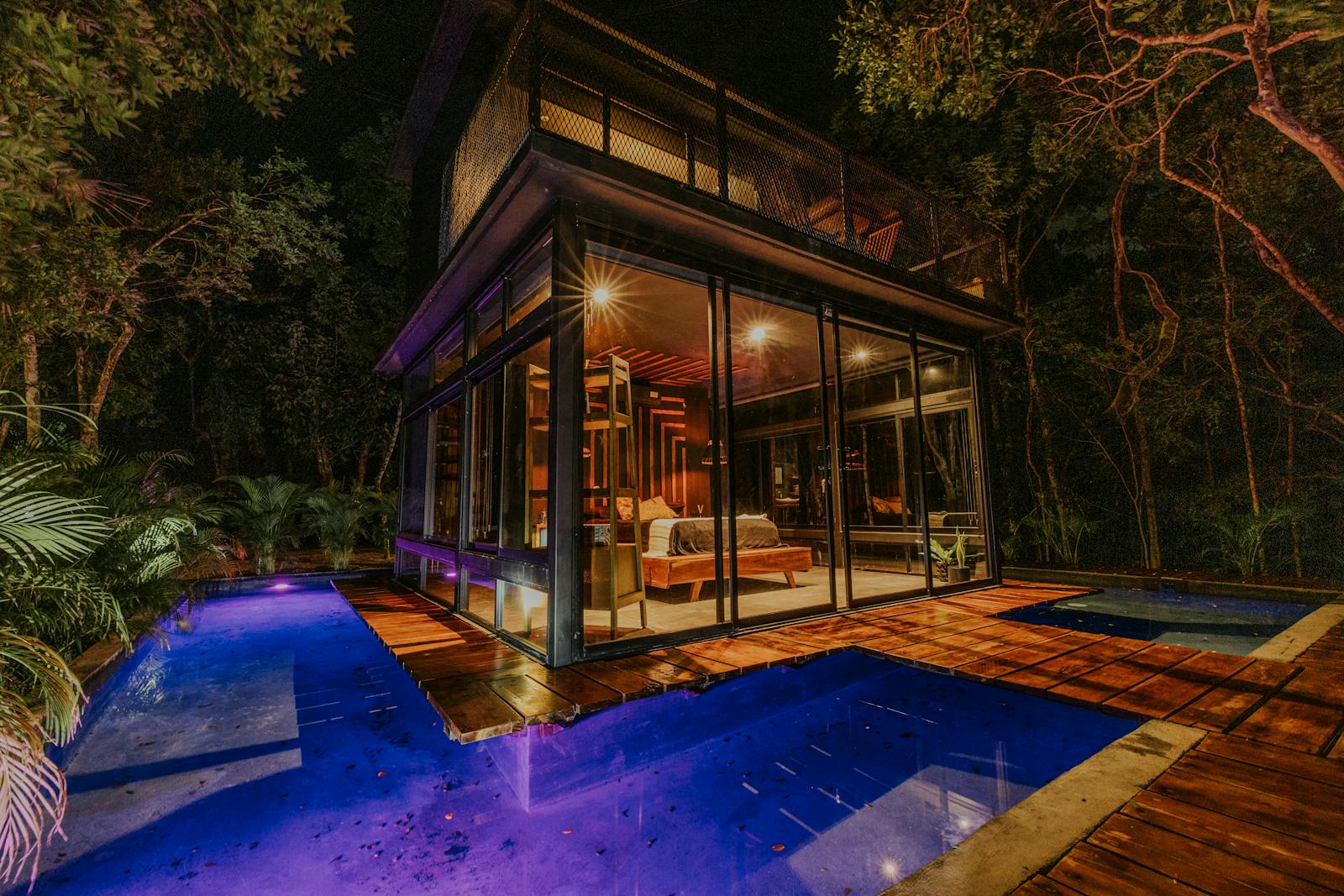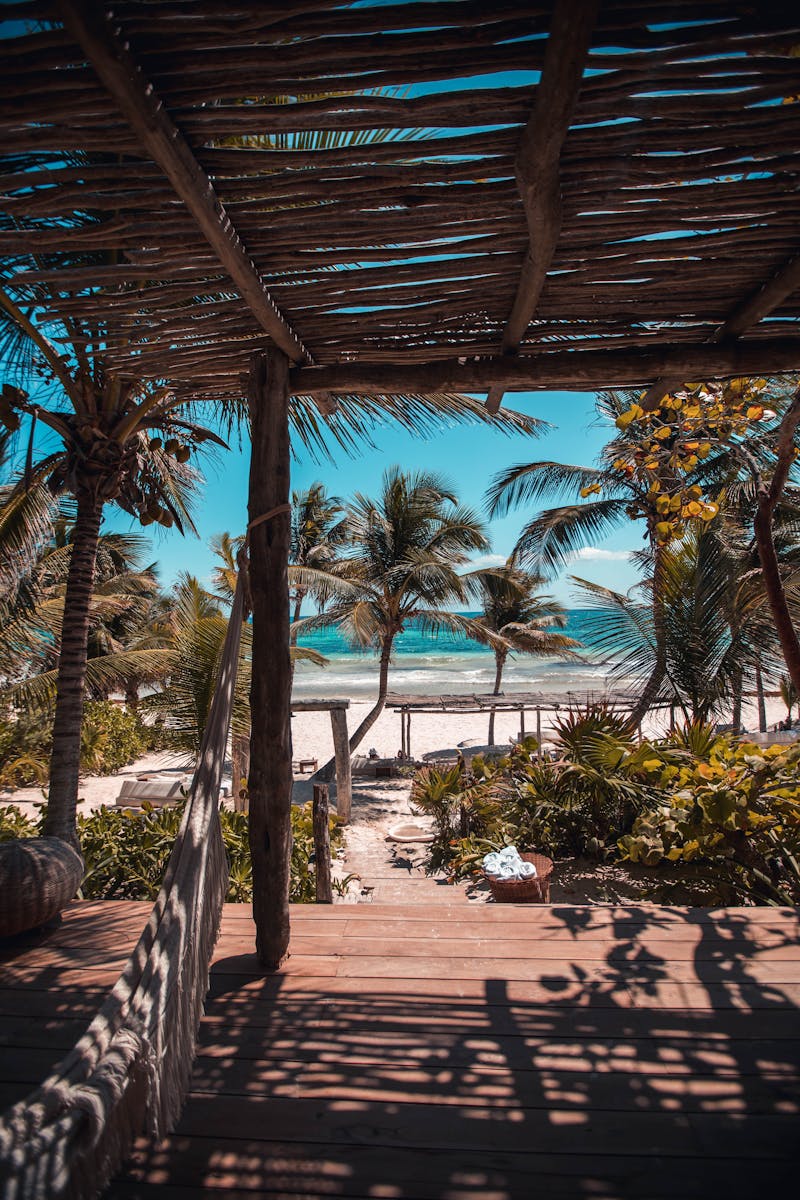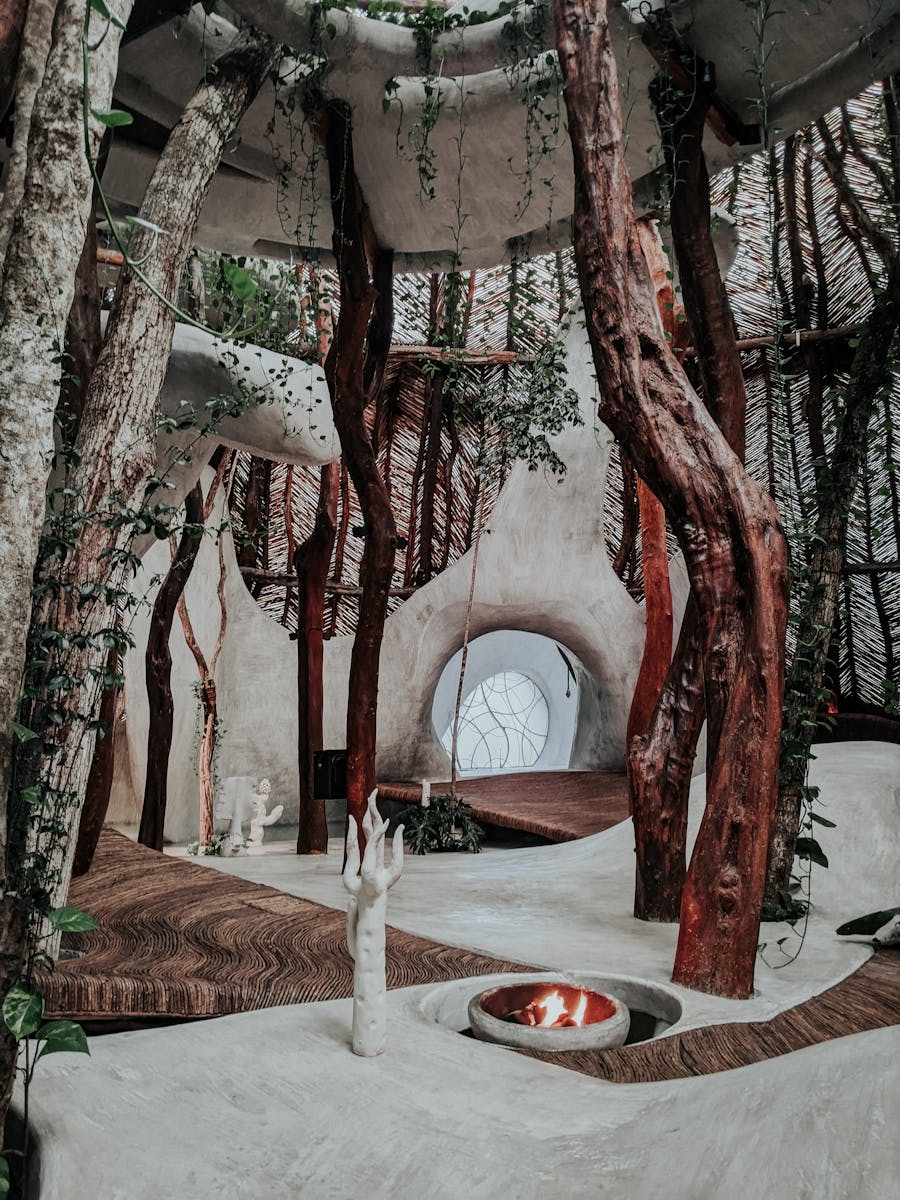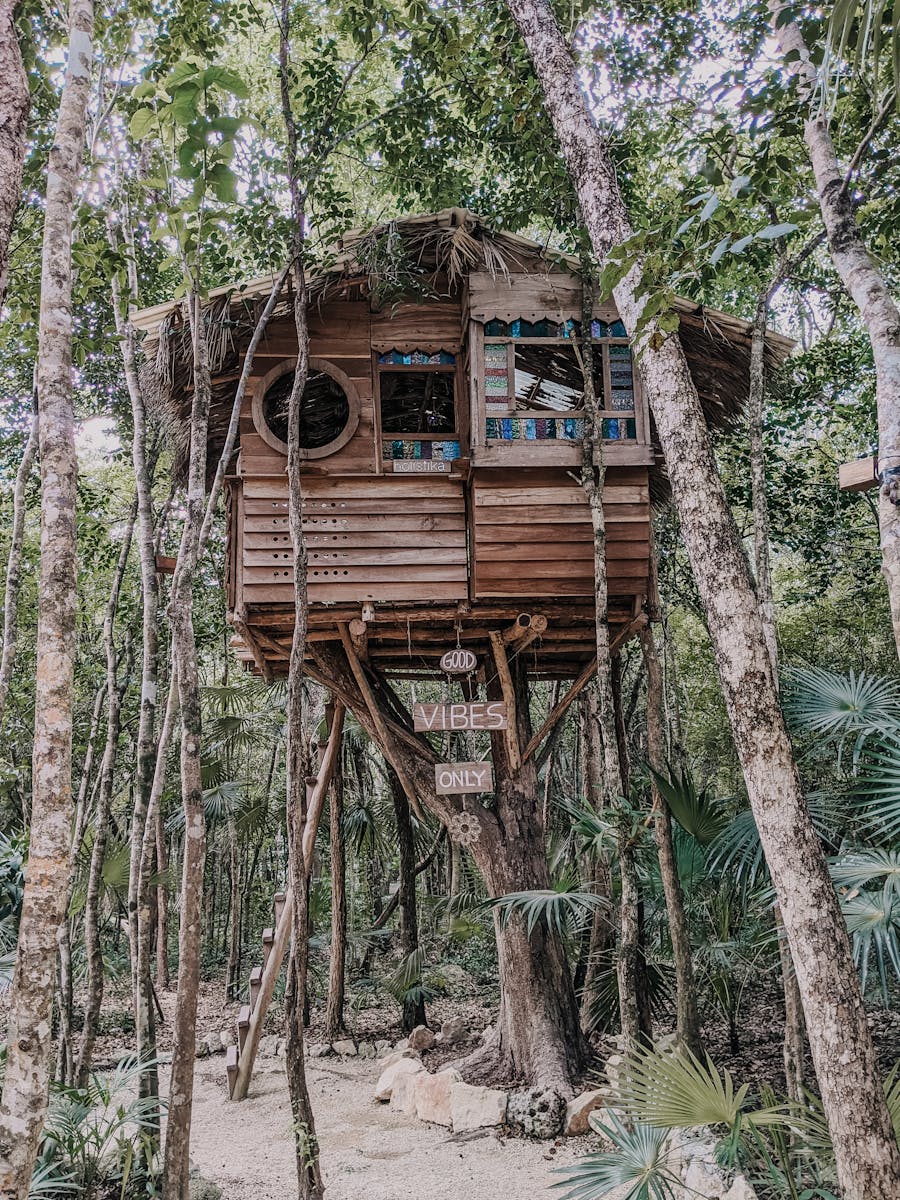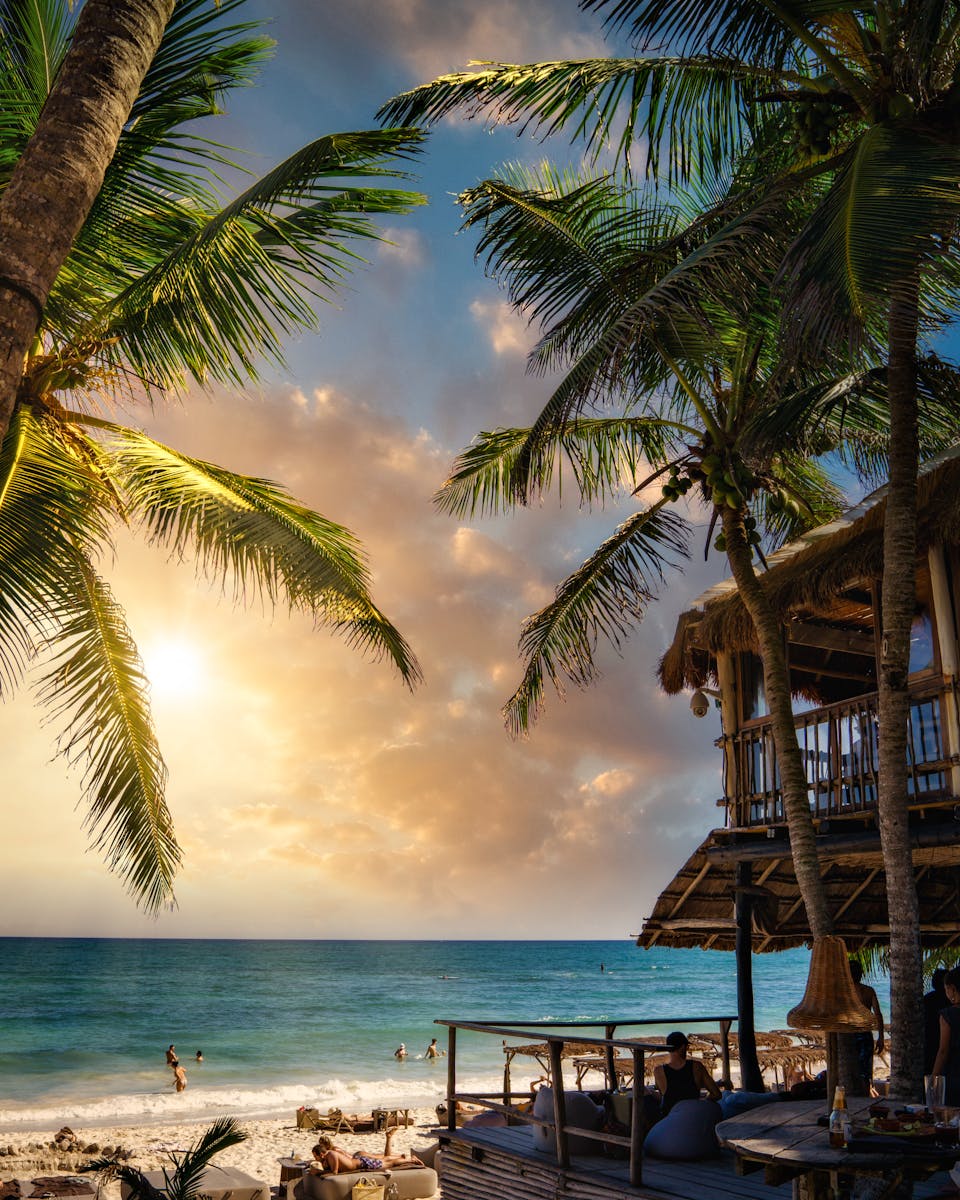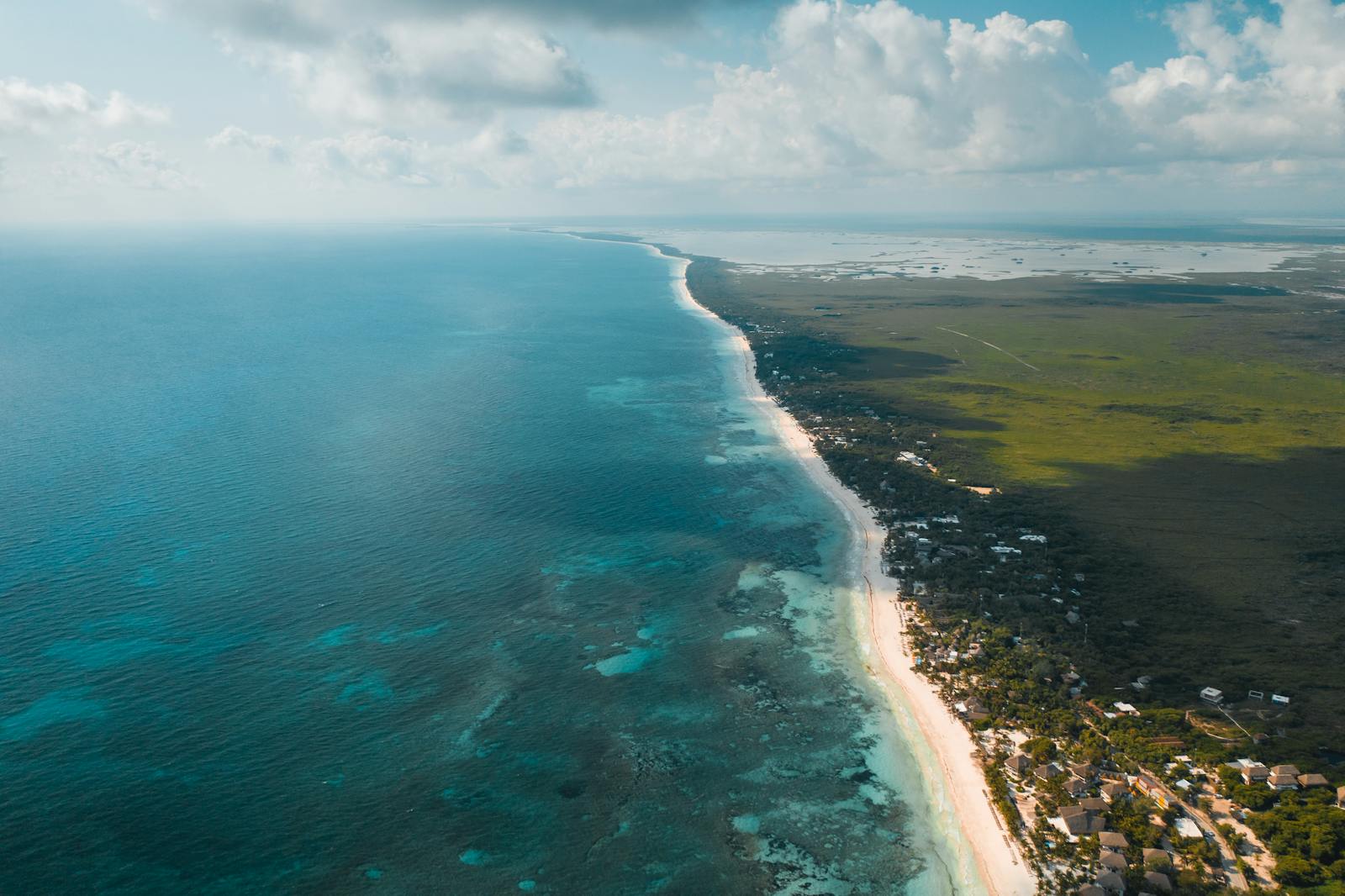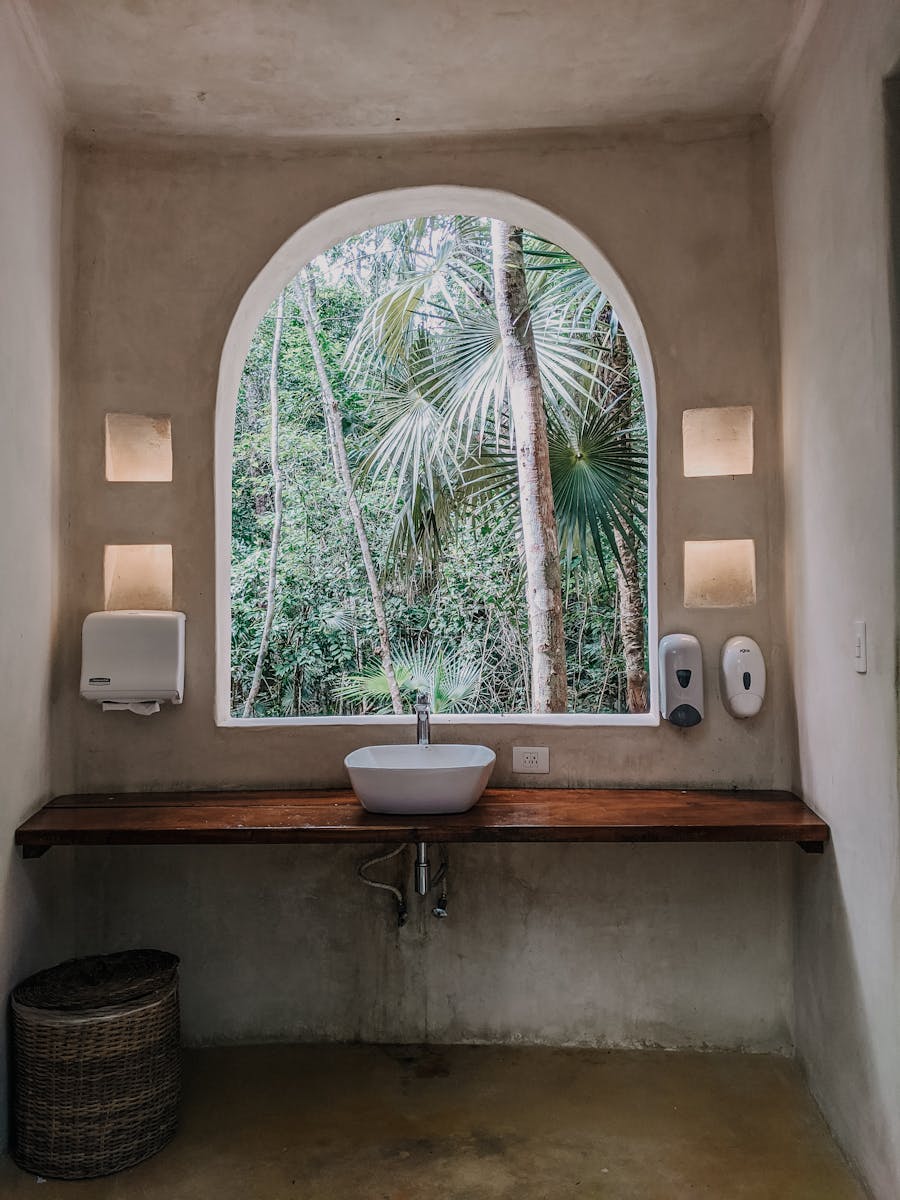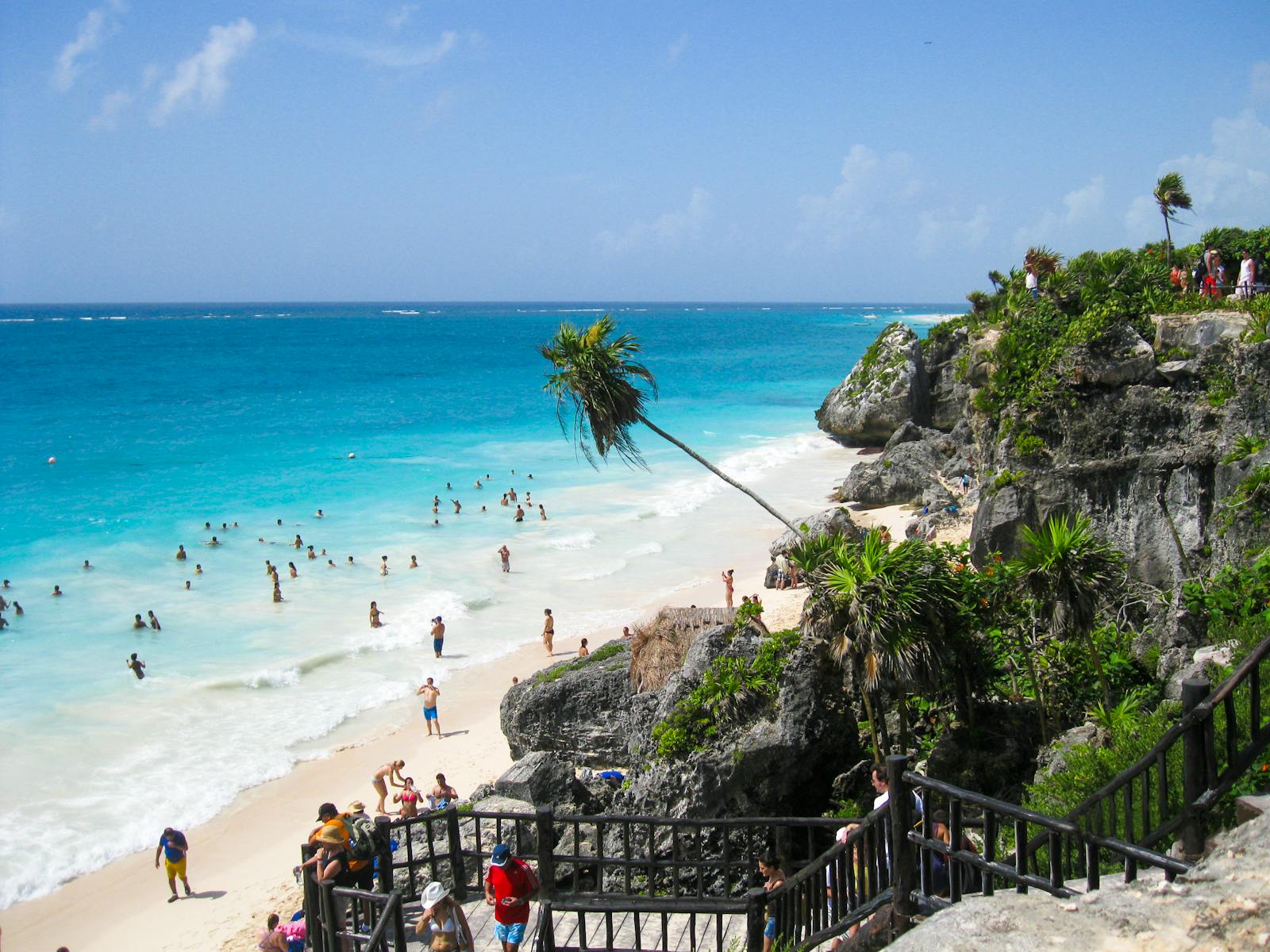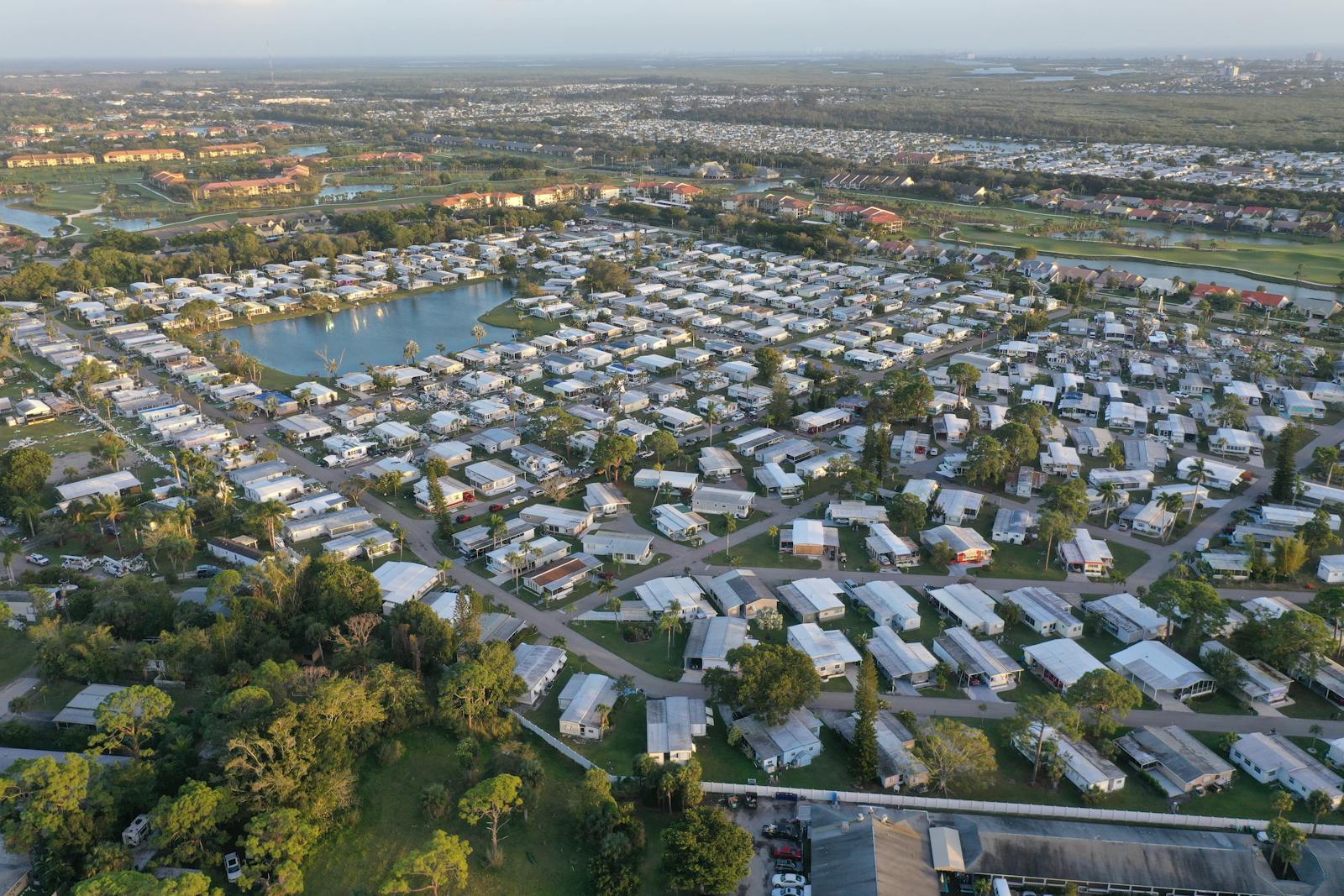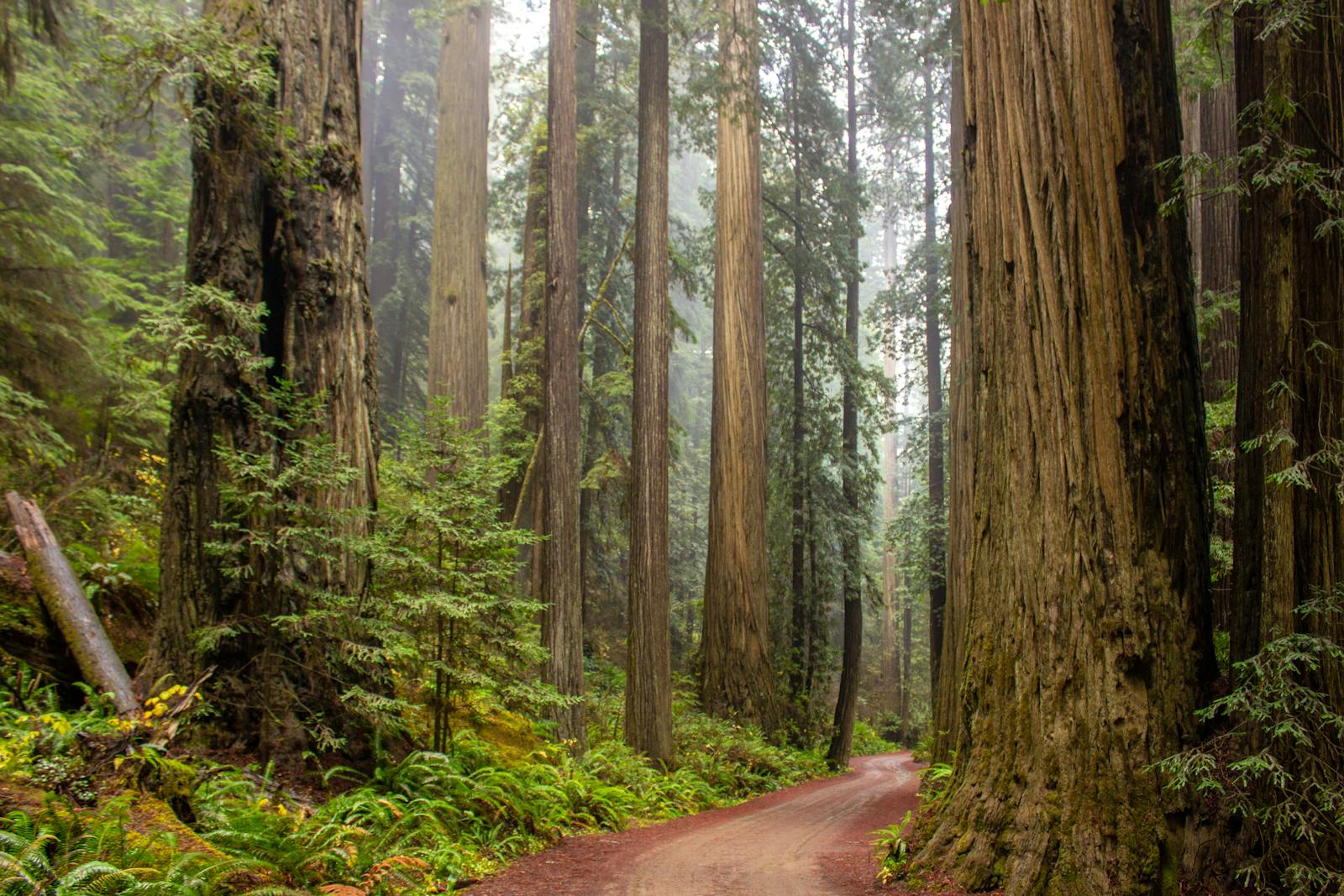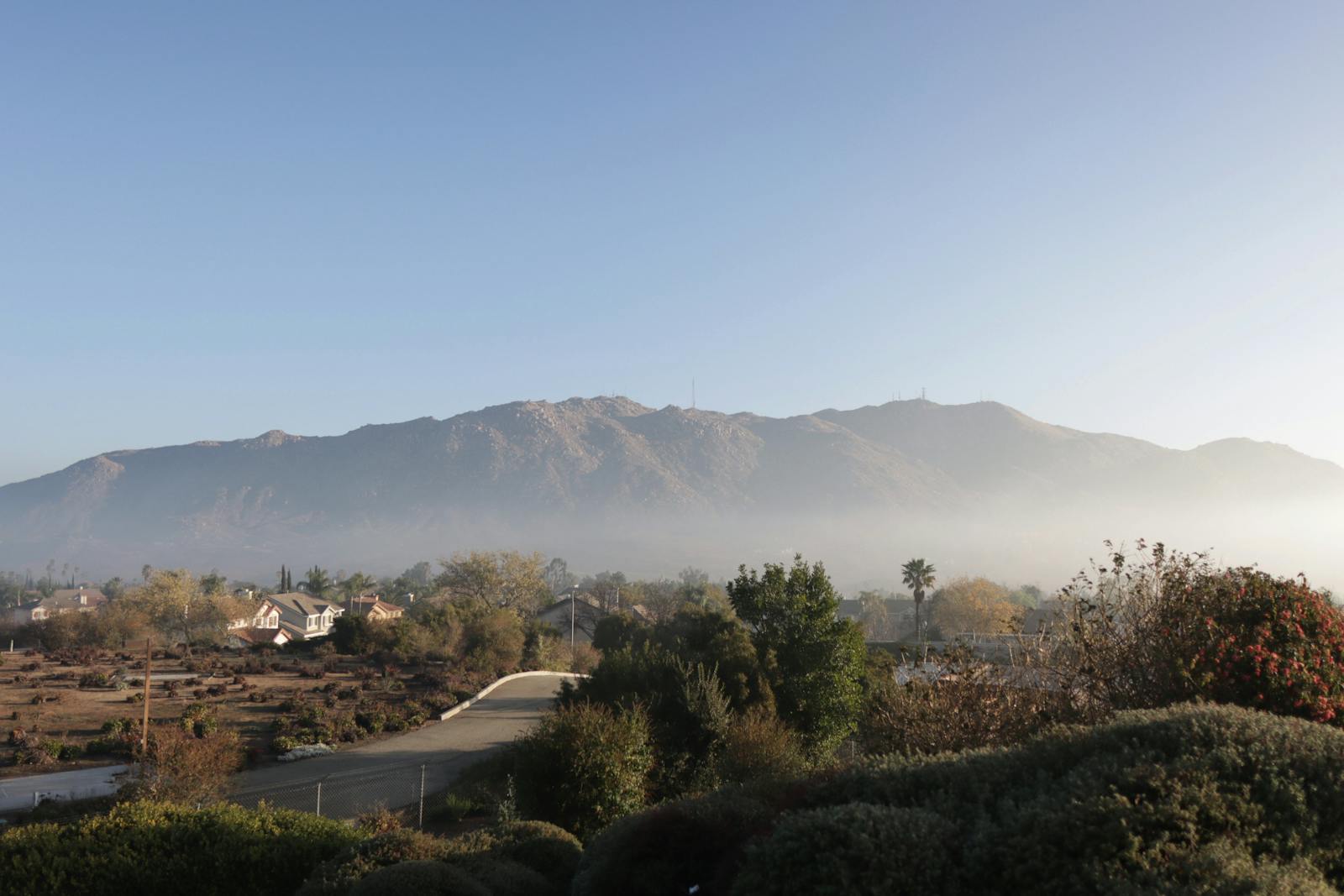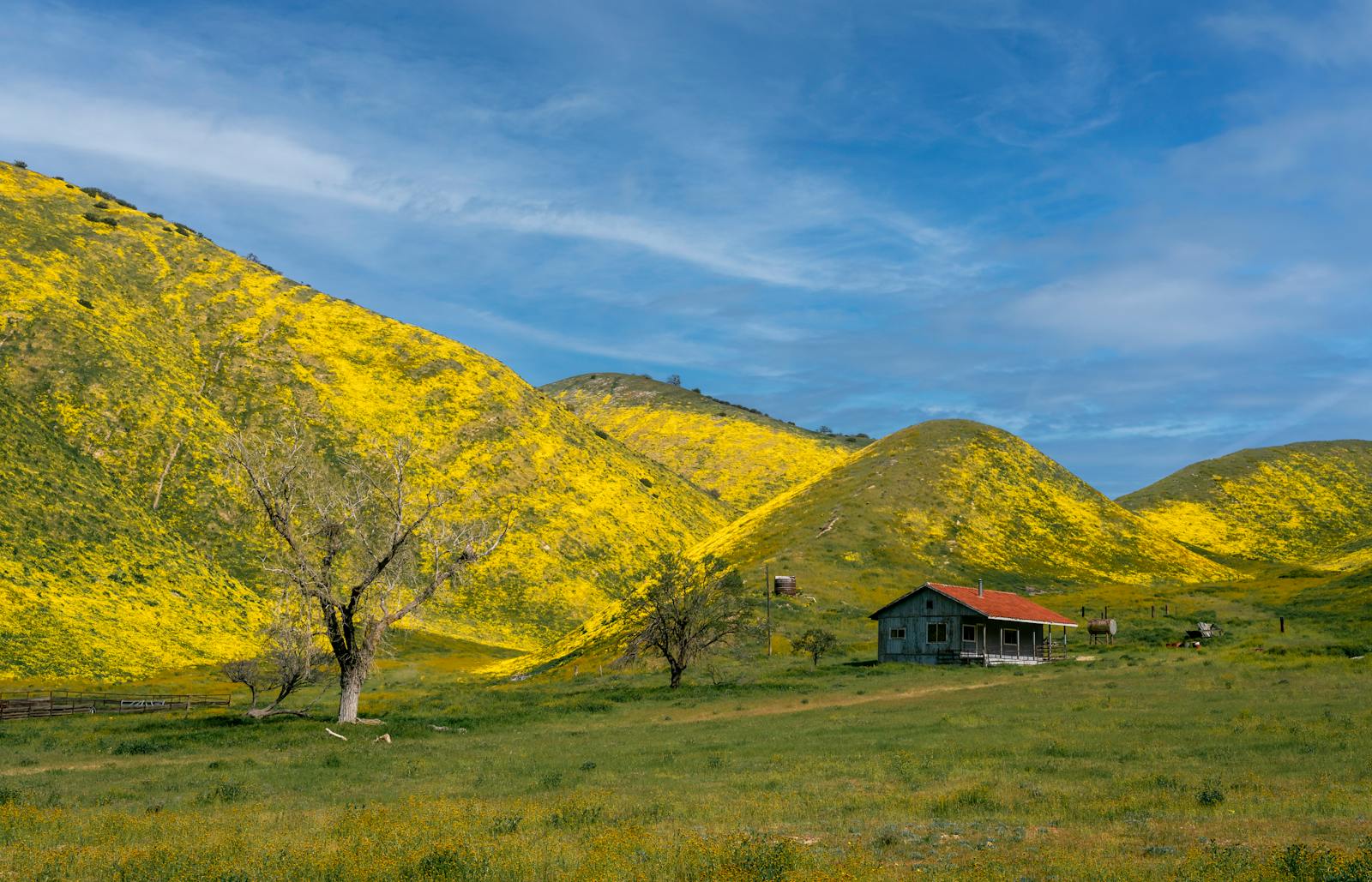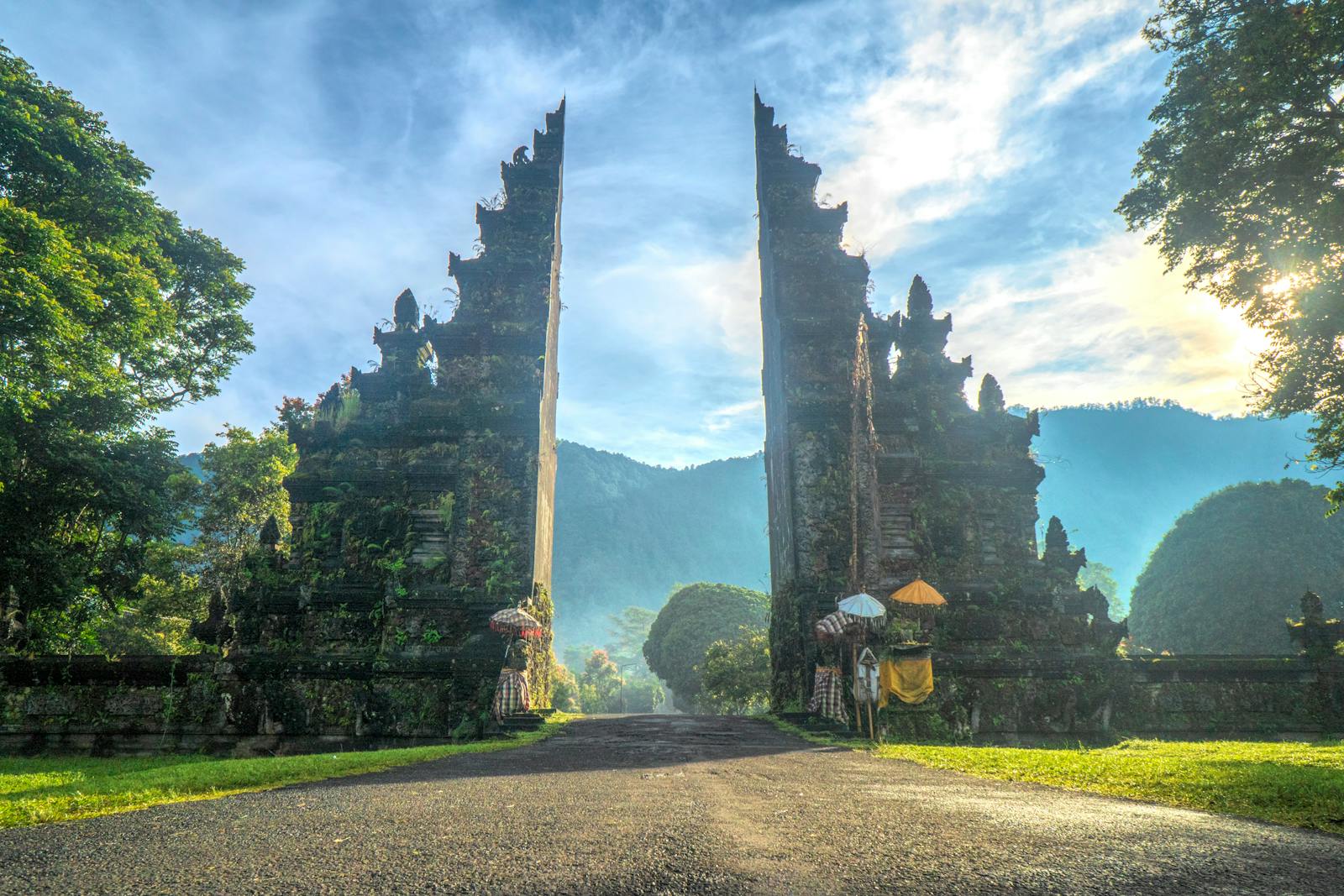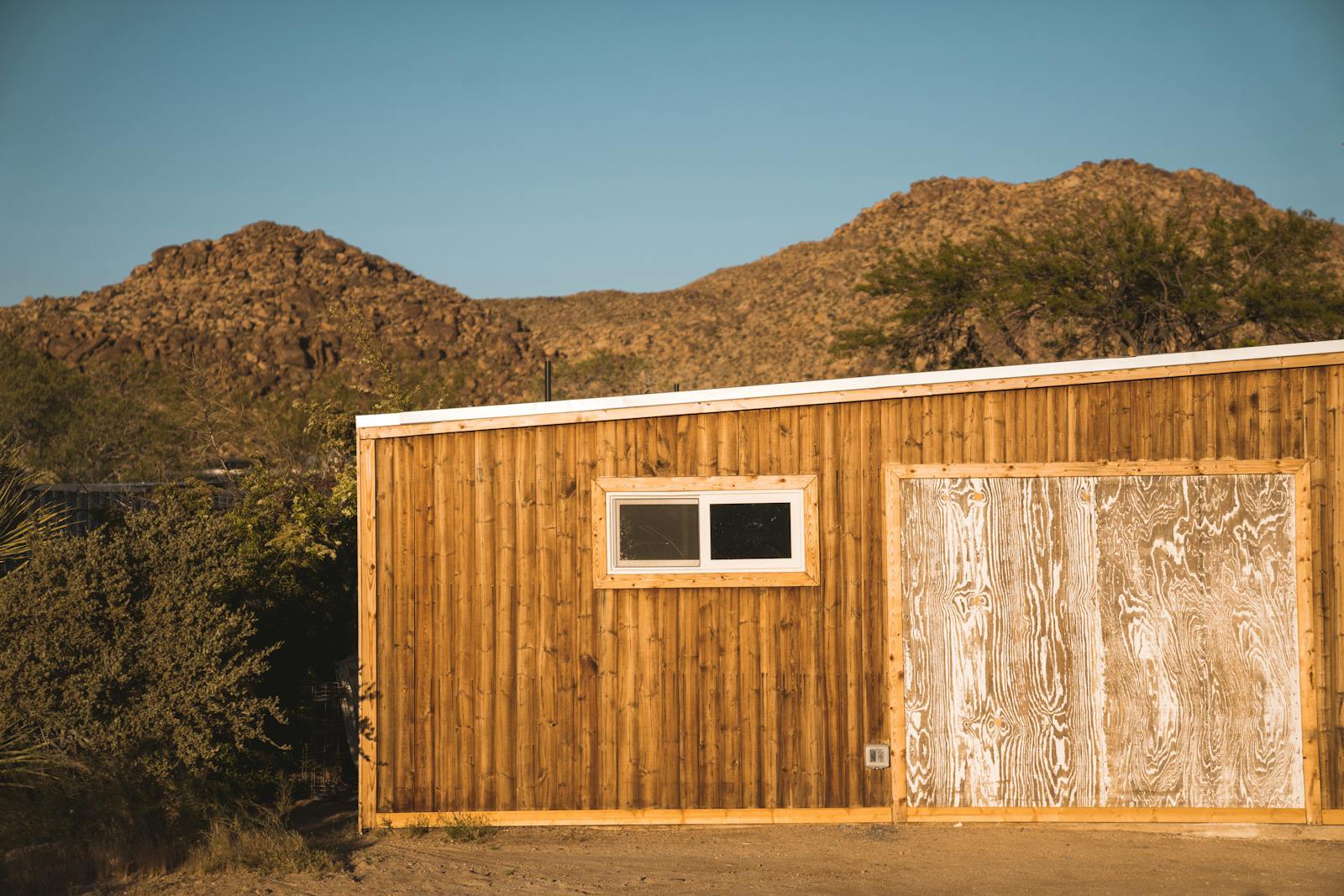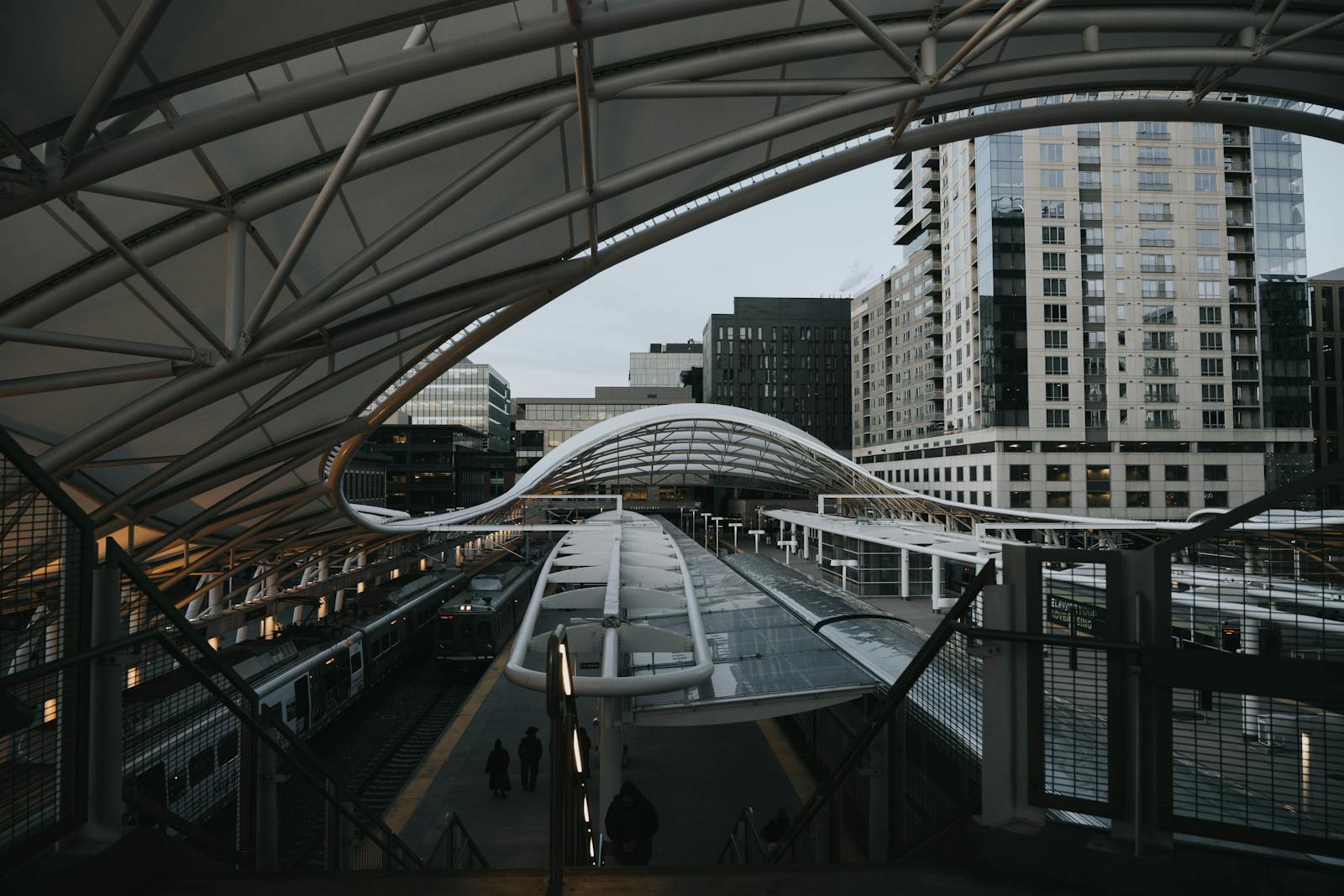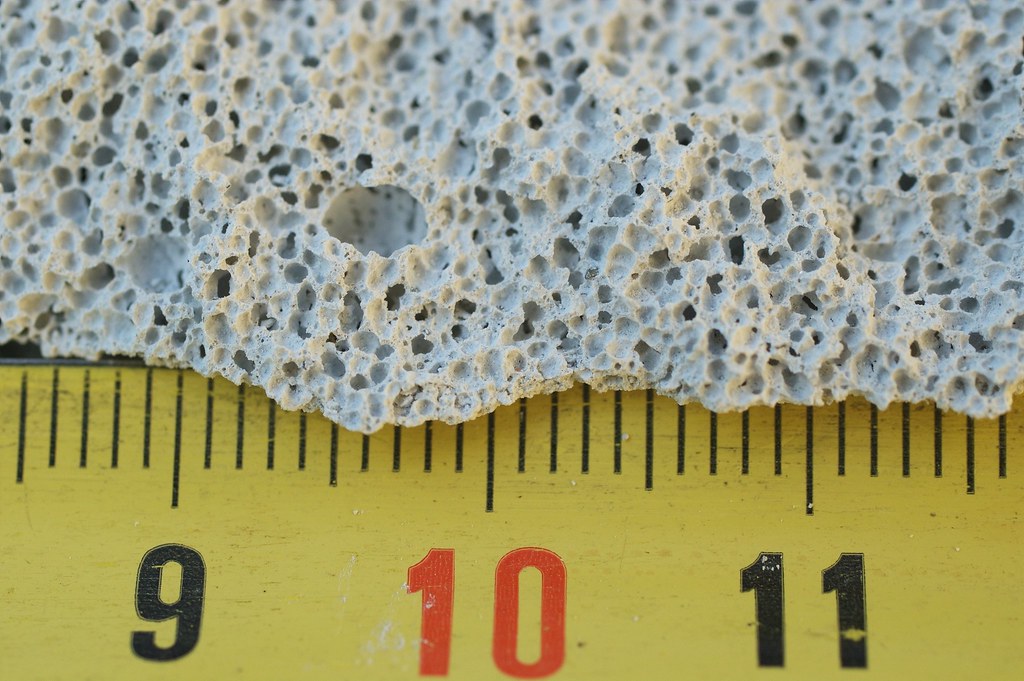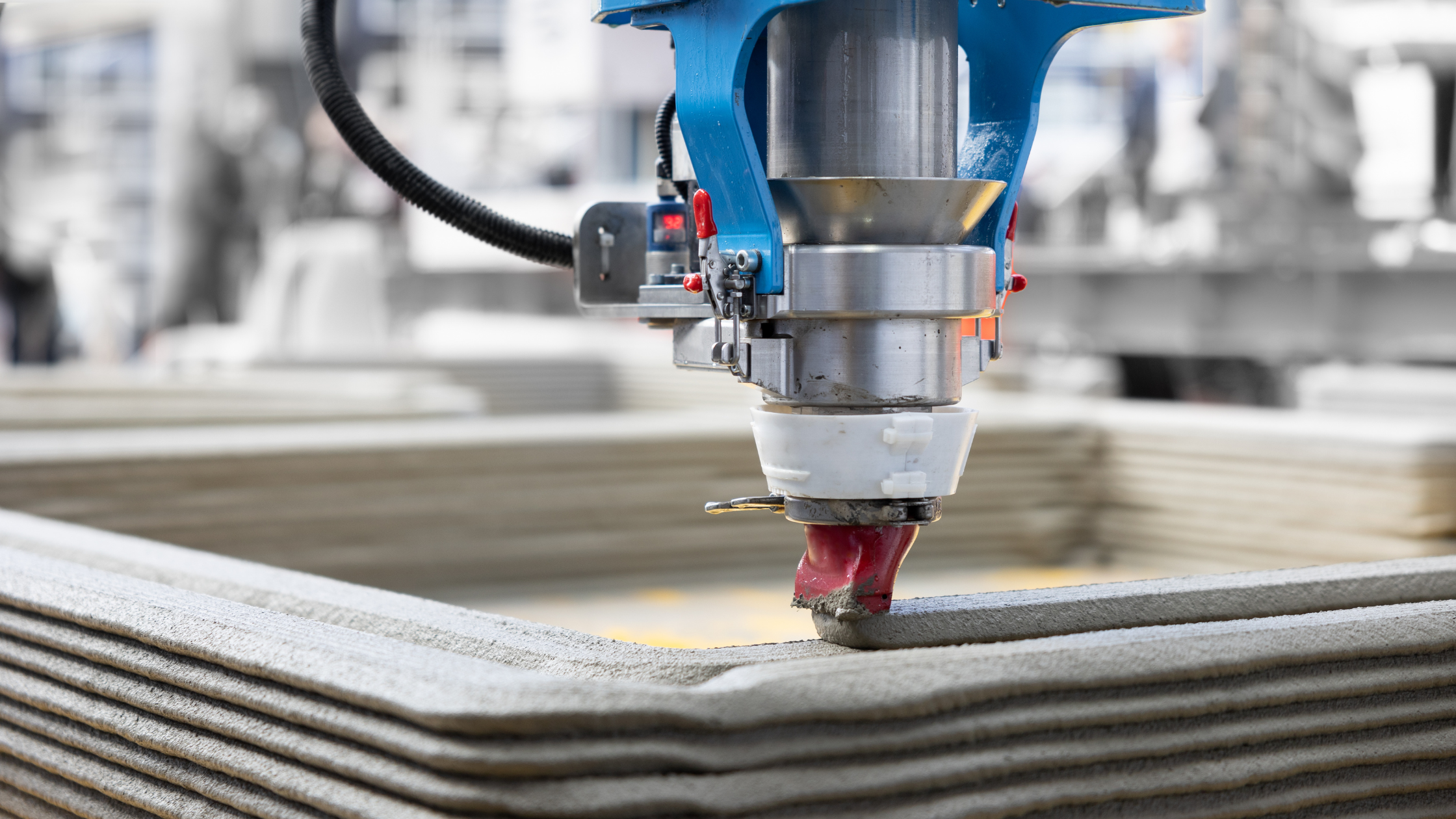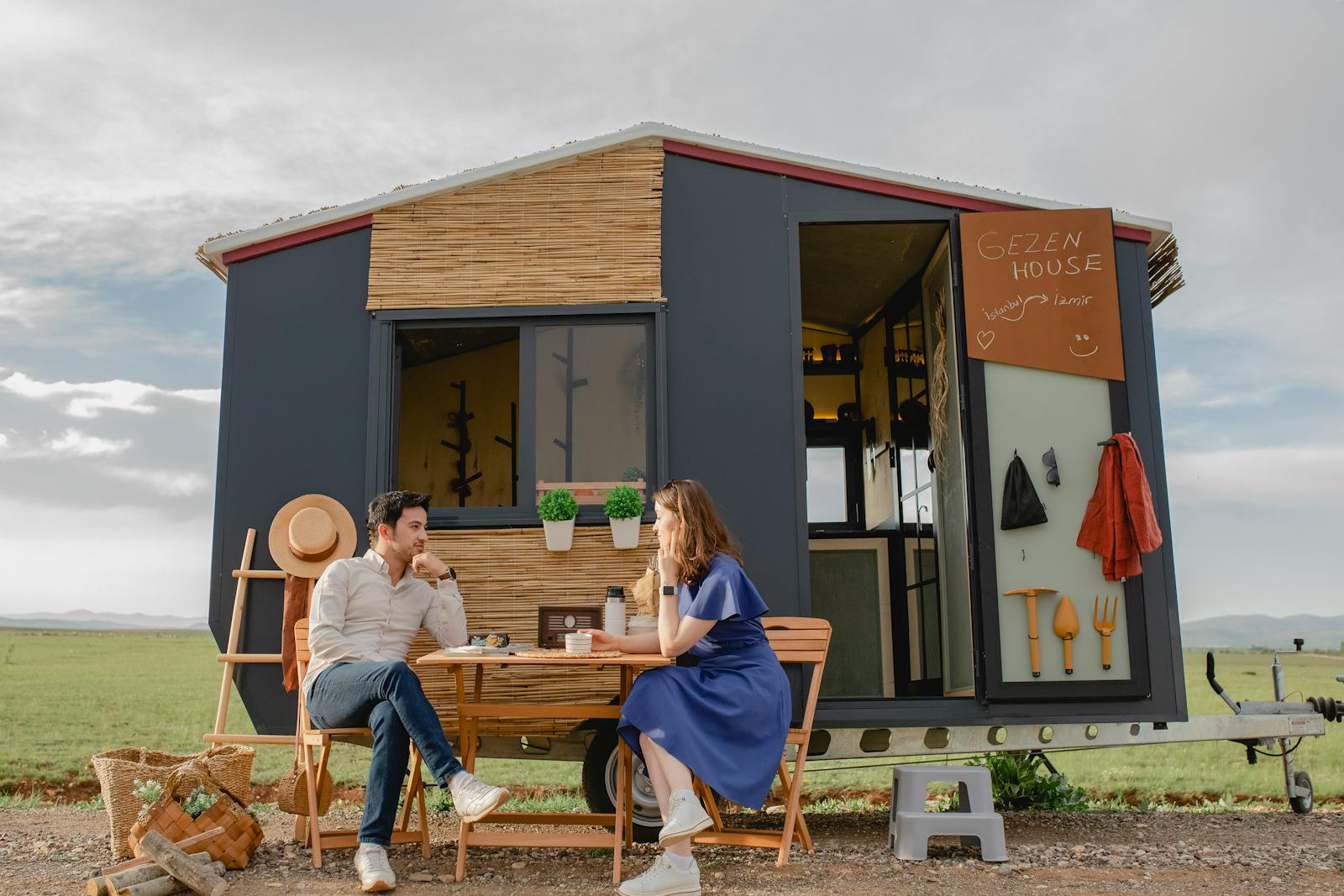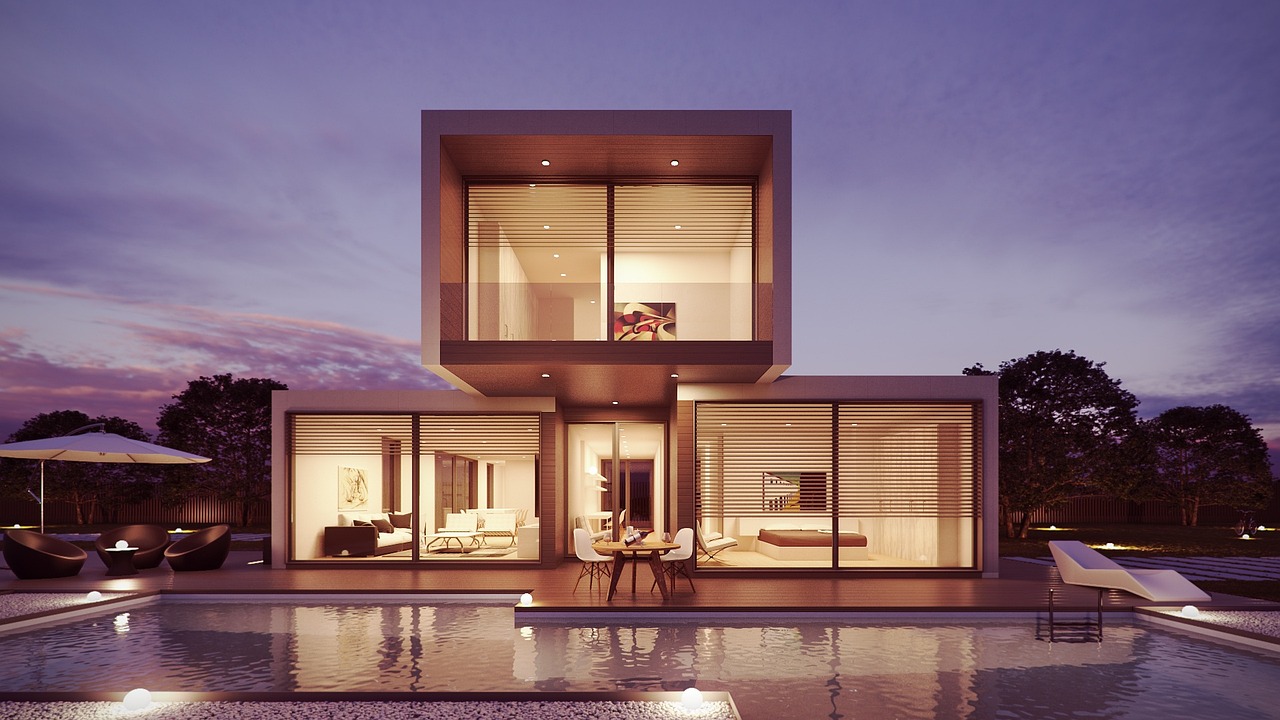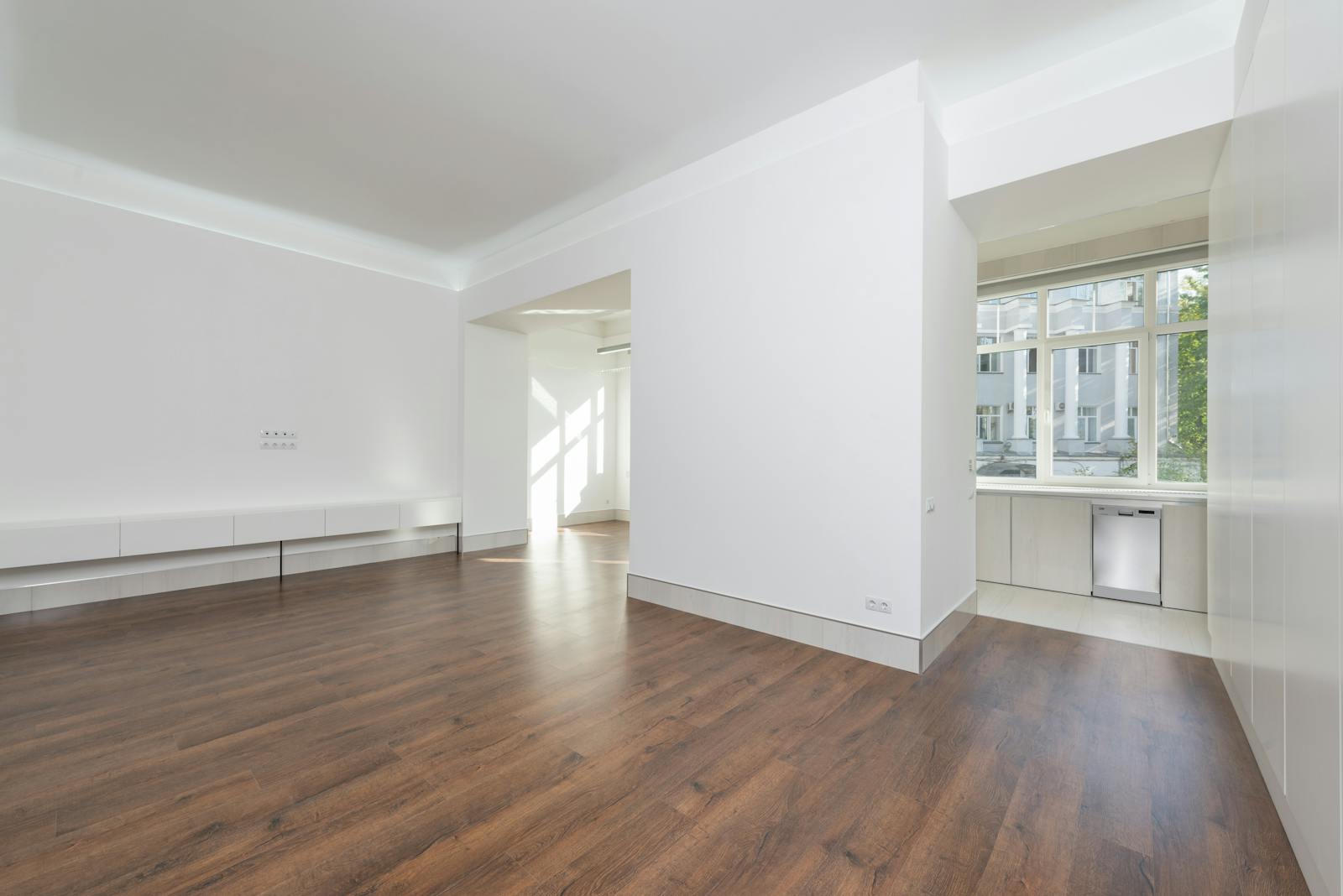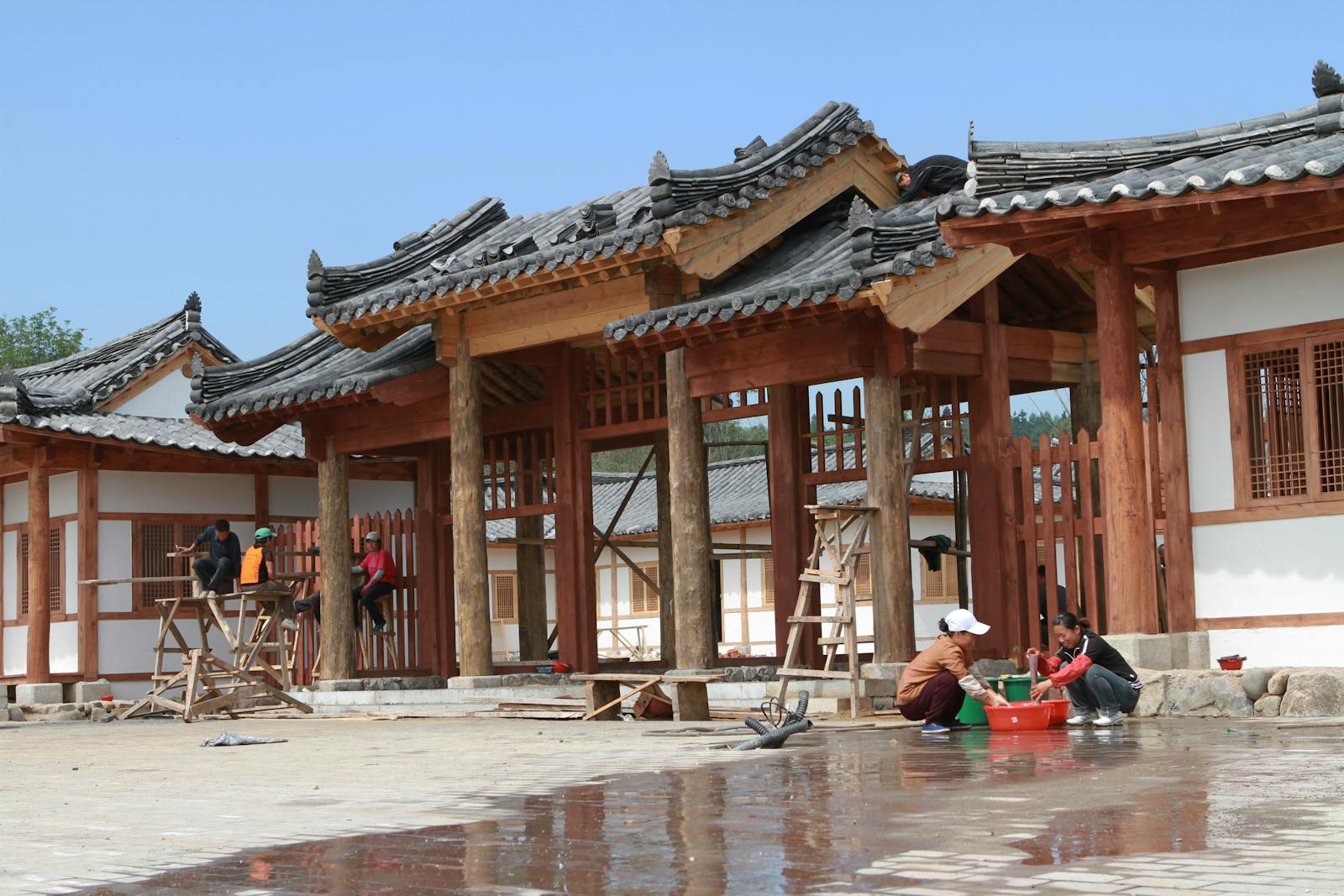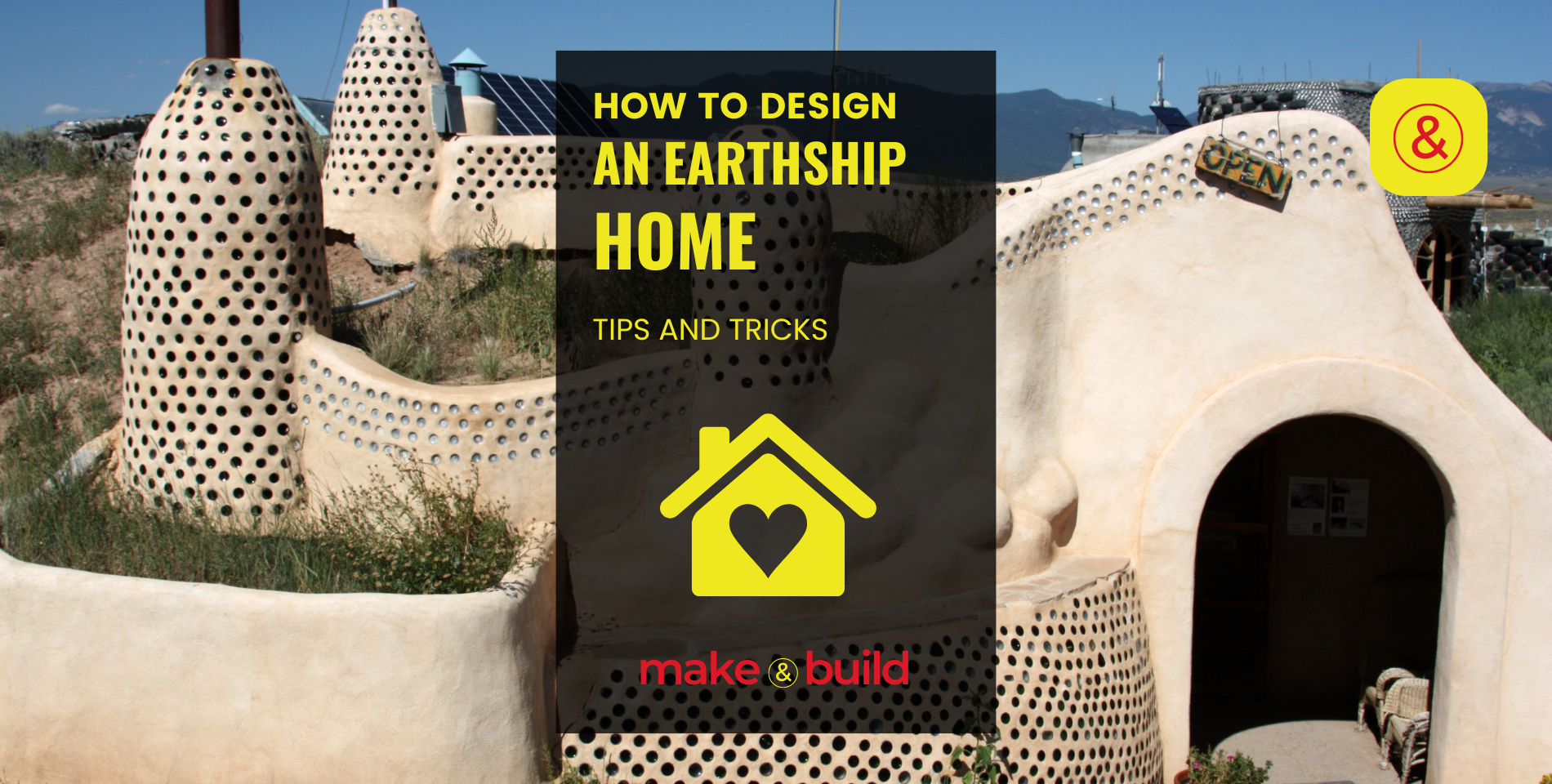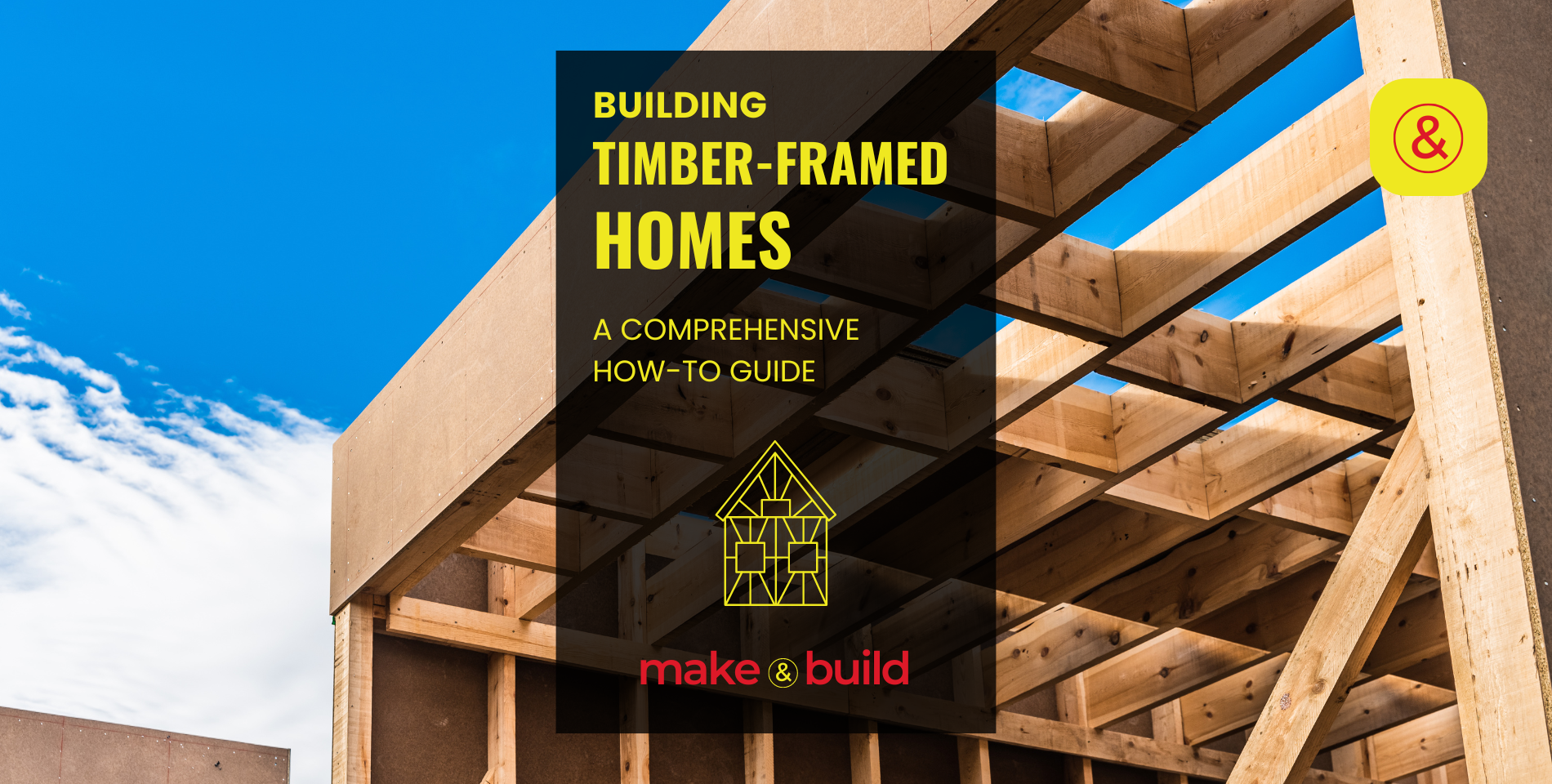Building in Tulum, Mexico
Tulum is a fast-growing eco-conscious destination with strong real estate investment potential. Its tropical climate, sustainable building practices, and high tourism demand make it ideal for modern and alternative construction methods.
Building in Tulum, Mexico
Tulum is a fast-growing eco-conscious destination with strong real estate investment potential. Its tropical climate, sustainable building practices, and high tourism demand make it ideal for modern and alternative construction methods.
Tulum Building Insights
- Scores
- Building Insights
- Photos
- Video
- Building Costs & Affordability
- Zoning & Land Use Regulations
- Infrastructure Readiness
- Climate & Environmental Factors
- Sustainability & Green Building
- Construction Workforce
- Investment & Development Potential
- Permitting & Bureaucratic Hurdles
- Seismic, Flood & Disaster Resilience
- Urban Expansion vs. Rural Development
- Top Construction Methods Used in the City
✅ Overall City Development Score
🏛️ Ease of Building Permits & Regulations Score
📍 Zoning Flexibility Score
🏢 Land Availability Score
👷 Construction Workforce Availability Score
🪵 Material Accessibility Score
🔌 Infrastructure Readiness Score
💰 Cost of Construction Score
⏳ Project Completion Speed Score
🌡️ Climate Adaptability Score
🌪️ Extreme Weather Risk Score
💨 Air Quality Score
🚰 Water Availability & Quality Score
🏗️ Soil Stability Score
🌱 Sustainability & Green Building Score
🏦 Real Estate Investment Potential Score
📊 Cost of Living Score
📈 Property Value Growth Score
📝 Taxation & Development Incentives Score
🏢 Business & Commercial Growth Score
🚇 Transportation & Public Transit Score
⚡ Utility & Energy Reliability Score
📡 Smart City & Technology Integration Score
🚶 Walkability & Accessibility Score
🏗️ Urban Density & Space Efficiency Score
🛡️ Safety & Crime Rate Score
🎓 Education & Workforce Training Score
🏥 Healthcare & Emergency Services Score
🏡 Community Development & Livability Score
🚀 Future Growth Potential Score
📖 City Building Overview:
Tulum, Mexico, is one of the fastest-growing destinations for sustainable real estate and luxury eco-tourism development. Its tropical climate, strict zoning laws, and focus on environmental preservation create a unique construction landscape. Popular building methods include reinforced concrete, prefabricated modular homes, and sustainable bamboo structures, ensuring resilience against hurricanes and heavy rainfall. The region’s high demand for off-grid living and eco-friendly developments has led to increased property values and a booming real estate market. However, builders must navigate environmental regulations, limited infrastructure, and seasonal weather challenges when planning construction.
City Name 🏙️
Country 🌍
Mexico
Latitude & Longitude 📍
20.2114° N, -87.4654° W
✈️ Living & Working Remotely
Climate & Weather Considerations ☀️🌧️
Tropical – Hot, humid summers with a wet season from May to October and a dry season from November to April.
Nearby Parks and Attractions 🌅
Tulum is known for its stunning beaches, lush jungles, and ancient ruins. Explore Tulum Ruins, Sian Ka’an Biosphere Reserve, Gran Cenote, and Parque Nacional Tulum for history, nature, and breathtaking coastal scenery.
Best Construction Methods for the City 🏗️
✔ Prefabricated & Modular Homes
✔ Reinforced Concrete & CMU Block
✔ 3D-Printed Homes
✔ Sustainable Bamboo Construction
✔ Rammed Earth & Adobe
Local Building Regulations & Permits 📜
Tulum’s construction regulations emphasize environmental sustainability. Strict zoning laws protect sensitive ecosystems, and permits require compliance with municipal regulations, environmental impact assessments, and water conservation strategies.
Zoning & Land Use Restrictions 🏢
Tulum’s zoning laws focus on eco-tourism, low-density housing, and commercial development near the town center. Coastal zones have height restrictions to preserve natural landscapes.
Availability of Construction Materials 🏗️
Moderate – Common materials like concrete and CMU blocks are available, but sustainable materials like bamboo and rammed earth often require sourcing from specialized suppliers.
Cost of Construction Per Square Foot 💰
Estimated at $80 – $200 USD per square foot, depending on design, materials, and sustainability features.
Workforce & Skilled Labor Availability 👷
High – The tourism and real estate boom has attracted experienced builders, but demand remains high, affecting labor costs.
Sustainability & Green Building Initiatives 🌱
Strong – Tulum prioritizes eco-friendly developments, off-grid solar homes, rainwater harvesting, and natural cooling techniques to minimize environmental impact.
Infrastructure & Utilities Access ⚡
Developing – While the city center has reliable water, electricity, and road infrastructure, many developments in jungle areas require off-grid solutions.
Resilience to Natural Disasters 🌪️
✔ Hurricanes – High risk due to coastal location
✔ Flooding – Moderate risk during the wet season
✔ Earthquakes – Low risk
✔ Fires – Moderate risk in dry jungle areas
Investment & Development Opportunities 📈
High – Tulum is experiencing rapid growth in luxury real estate, eco-resorts, and rental properties, making it a prime location for investors.
Urban vs. Rural Development Suitability 🌆🏡
✔ Urban: Near town center and commercial districts for mixed-use developments
✔ Rural: Eco-friendly retreats and sustainable off-grid living in jungle areas
Government Incentives & Grants 💸
Tulum offers some green building incentives and tax benefits for eco-conscious developers, but most support is provided at the federal level.
Building Insights & Key Facts 🔍
- High tourism demand fuels rapid real estate expansion
- Eco-conscious construction is encouraged over high-density development
- Water conservation is critical due to limited freshwater sources
- Short-term rental market drives property investment
City Development Score 📊
75/100
🏗️ Building Costs & Affordability in Tulum
Tulum’s rapid real estate growth and increasing demand for sustainable housing have significantly impacted construction costs and affordability. While building in Tulum is still cheaper than in major U.S. and European cities, costs have been rising due to high demand, material sourcing challenges, and the need for sustainable building practices.
💰 Average Cost of Construction Per Square Foot
- Low-End Builds (Basic Concrete Homes): $80 – $120 per sq. ft.
- Mid-Range Homes (Eco-Friendly & Custom Designs): $120 – $180 per sq. ft.
- High-End Luxury & Sustainable Villas: $180 – $300+ per sq. ft.
📊 Factors Affecting Construction Costs
1. Material Sourcing & Availability
While basic materials like concrete blocks, rebar, and cement are readily available, sustainable materials such as bamboo, rammed earth, and recycled composites often need to be imported or sourced from specialized suppliers, increasing costs.
2. Labor Costs & Workforce Availability
Tulum has a growing skilled labor force, but as demand for new developments rises, construction worker wages have increased. Labor is more affordable than in the U.S. or Canada, but finding highly skilled builders for eco-friendly or luxury projects can drive up costs.
3. Permitting & Regulatory Costs
Tulum has strict environmental and zoning regulations, particularly for developments near the beachfront or protected jungle areas. Developers must conduct environmental impact assessments (EIA), which add to project costs and can cause delays.
4. Off-Grid Infrastructure Requirements
Many new developments in Tulum require off-grid solutions for water, power, and sewage. The cost of installing solar power, water catchment systems, and septic tanks can add $10,000 – $50,000+ to the total project budget.
5. High Demand & Foreign Investment Impact
As Tulum’s popularity grows among digital nomads, expats, and investors, land and construction prices continue to rise yearly, making affordability an increasing concern for locals.
💡 Key Takeaways
✔ Tulum remains affordable compared to U.S. markets, but costs are rising due to demand and regulatory requirements.
✔ Sustainable and eco-friendly materials increase building costs but add long-term value.
✔ Off-grid infrastructure costs are essential for rural and jungle developments.
✔ Luxury and investment properties are driving up land and labor prices.
🚀 Best Strategy: Developers should budget for sustainability and off-grid solutions while securing permits early to avoid delays. Building now is ideal before prices rise further.
🏛️ Zoning & Land Use Regulations in Tulum
Tulum’s zoning and land use regulations are designed to balance rapid development with environmental conservation, ensuring that new construction projects align with the region’s eco-tourism identity and fragile ecosystem. Strict zoning laws control building height, density, and environmental impact, making compliance essential for developers.
📜 Key Zoning Regulations in Tulum
1. Height & Density Restrictions
- Maximum height limit: Typically 12 meters (3 stories) to preserve Tulum’s natural skyline.
- Low-density development is required in many areas, restricting large high-rise or mass housing projects.
2. Environmental Protection & Conservation Zones
- Large portions of Tulum fall under Protected Natural Areas (Áreas Naturales Protegidas), where construction is heavily restricted or banned.
- Developments near beaches, lagoons, and jungle reserves require environmental impact assessments (EIA) before approval.
- The Tulum National Park and Sian Ka’an Biosphere Reserve have strict development bans to protect biodiversity.
3. Residential & Commercial Zoning
Tulum is divided into specific zoning districts, with different rules for residential, commercial, and mixed-use developments:
- Tourist & Commercial Zones: Concentrated along Avenida Cobá, Aldea Zama, and La Veleta, allowing hotels, short-term rentals, and commercial developments.
- Residential Zones: Found in Tulum Town and outskirts, allowing low-density housing, vacation rentals, and small eco-friendly communities.
- Jungle & Off-Grid Areas: Require special permits for sustainable, off-grid homes with rainwater collection, solar power, and composting systems.
4. Land Ownership & Ejido Land Considerations
- Ejido land (communal land) must be regularized and titled before foreign buyers can purchase or develop it.
- Private land with a clean title (Escritura Pública) is safer for development and resale.
5. Building Permits & Regulatory Compliance
- Developers must obtain permits from the Tulum Municipality and ensure compliance with federal environmental laws under SEMARNAT.
- Setbacks and buffer zones are required between structures and natural habitats.
- Eco-certifications may be required for sustainability-focused projects.
📌 Key Takeaways
✔ Height and density restrictions limit large developments, preserving Tulum’s natural appeal.
✔ Environmental regulations are strict, especially near coastal and jungle areas.
✔ Buying titled land is essential to avoid legal complications with Ejido land.
✔ Sustainable and eco-conscious designs align best with zoning laws.
🚀 Best Strategy: Developers should secure legal land ownership, plan for sustainability, and navigate environmental regulations early to streamline the permitting process in Tulum.
-
Tulum National Park Management Program: Provides detailed guidelines and regulations for developments within the Tulum National Park area.
-
National Commission of Protected Natural Areas (CONANP): Offers comprehensive information on protected areas, including Tulum, outlining environmental considerations and restrictions.
-
Municipality of Tulum Official Website: The primary source for local regulations, permits, and municipal guidelines related to construction and land use. tulum.gob.mx
-
National Institute of Anthropology and History (INAH) – Tulum Archaeological Zone: Details regulations and considerations for developments near archaeological sites in Tulum.
🔌 Infrastructure Readiness in Tulum
Tulum’s rapid urbanization and real estate boom have led to significant infrastructure development, but challenges remain in ensuring reliable access to essential services like roads, utilities, and public amenities. While the town center has relatively well-established infrastructure, rural and off-grid developments often require self-sustaining solutions for water, energy, and waste management.
🚧 Road Networks & Transportation
Tulum is served by Federal Highway 307, which connects it to Playa del Carmen and Cancun. However, within Tulum itself:
- Paved roads are mostly concentrated in urban areas, while jungle developments rely on dirt and gravel roads.
- Traffic congestion is increasing, especially near Avenida Cobá and the Hotel Zone.
- Public transportation options are limited, with taxis, bicycles, and colectivos being the primary modes of transit.
🚀 Planned Improvements:
- Tulum International Airport (expected completion in 2024) will boost accessibility.
- Mayan Train Project aims to improve regional connectivity and tourism flow.
⚡ Electricity & Power Reliability
- Reliable grid power is available in central areas, but remote developments often require off-grid solutions.
- Frequent power outages occur during peak tourist seasons due to demand surges.
- Many homes and businesses rely on solar power, with battery storage systems becoming increasingly popular.
🚰 Water Supply & Quality
- No centralized water supply—most properties depend on well water or trucked-in water deliveries.
- Limited fresh water availability due to the region’s delicate underground cenote system.
- Water filtration and purification systems are essential due to potential contamination.
🌿 Sustainable Solutions:
- Rainwater harvesting systems are commonly integrated into eco-friendly developments.
- Developers are adopting wastewater treatment and composting toilets to reduce environmental impact.
🗑️ Waste Management & Sanitation
- No formal city-wide sewage system—most properties rely on septic tanks.
- Waste collection services are inconsistent, particularly outside central areas.
- Recycling initiatives are growing, but landfill waste remains a concern.
♻️ Eco-friendly solutions include:
- Composting toilets to reduce wastewater impact.
- Biodigesters for organic waste management.
📡 Internet & Digital Infrastructure
- Fiber-optic internet is available in central areas, but rural and off-grid developments rely on satellite or mobile data.
- Connectivity is improving, but speeds may be inconsistent, especially during storms.
🏗️ Key Takeaways
✔ Tulum’s infrastructure is developing but still lags behind major cities.
✔ Off-grid solutions for water, power, and sanitation are essential for new developments.
✔ Upcoming projects like the Tulum International Airport and Mayan Train will improve connectivity.
✔ Eco-conscious building methods help mitigate infrastructure gaps.
🚀 Best Strategy: Developers should plan for off-grid energy, water filtration, and sustainable waste management while staying updated on upcoming infrastructure improvements.
☀️ Climate & Environmental Factors in Tulum
Tulum’s tropical climate and delicate ecosystem play a crucial role in shaping construction practices, sustainability efforts, and long-term livability. With high temperatures, seasonal hurricanes, and sensitive environmental zones, developers must carefully consider materials, design, and infrastructure to ensure resilience and minimal ecological impact.
🌡️ Climate Overview
Tulum experiences a tropical monsoon climate, characterized by:
- Hot, humid summers with temperatures ranging from 75°F to 95°F (24°C – 35°C).
- Mild, dry winters with lows around 65°F (18°C).
- A distinct rainy season (June – October), bringing heavy rainfall and humidity.
- Hurricane season (June – November), with strong winds and potential flooding risks.
✅ Best Building Adaptations:
- Elevated foundations to prevent flood damage.
- Cross-ventilation design for passive cooling.
- High-albedo roofing to reflect heat and reduce indoor temperatures.
🌪️ Natural Disaster Risks
Tulum is prone to hurricanes, tropical storms, and flooding, making disaster-resistant construction essential.
1. Hurricane & Wind Exposure
- High winds (up to 120+ mph during storms) can damage poorly reinforced structures.
- Concrete block construction and reinforced roofs are preferred for storm resistance.
- Hurricane shutters and impact-resistant windows reduce structural damage.
2. Flooding & Heavy Rainfall
- Low-lying areas are vulnerable to flash floods, especially in the rainy season.
- Permeable driveways, proper drainage, and elevated designs prevent water damage.
3. Saltwater Corrosion & Coastal Erosion
- Beachfront properties are at risk of saltwater corrosion, requiring rust-resistant materials like stainless steel and treated concrete.
- Coastal erosion limits direct beachfront development in protected areas.
🌿 Environmental Considerations & Conservation Zones
Tulum is home to protected natural reserves, cenotes, and fragile coastal ecosystems, requiring strict environmental regulations for new developments.
1. Sensitive Ecosystems & Protected Areas
- Sian Ka’an Biosphere Reserve & Tulum National Park restrict large-scale developments.
- Cenotes (underground freshwater systems) must be protected from contamination, affecting septic system designs.
2. Sustainable & Low-Impact Building Practices
- Minimal land clearing is encouraged to preserve jungle biodiversity.
- Rainwater harvesting and greywater recycling help reduce water consumption.
- Solar energy and off-grid solutions minimize dependence on fragile infrastructure.
📌 Key Takeaways
✔ Tulum’s tropical climate requires flood-resistant, well-ventilated, and hurricane-proof construction.
✔ Eco-friendly and off-grid solutions are vital due to sensitive ecosystems and limited public infrastructure.
✔ Coastal developments must use corrosion-resistant materials to withstand salt exposure.
✔ Strict environmental laws govern new construction, particularly near cenotes and protected areas.
🚀 Best Strategy: Developers should prioritize sustainability, disaster resilience, and eco-friendly construction materials to ensure longevity and compliance in Tulum.
🌱 Sustainability & Green Building in Tulum
Tulum has become a global leader in sustainable construction, with developers, homeowners, and investors increasingly prioritizing eco-friendly building methods. Due to strict environmental regulations, reliance on off-grid systems, and a thriving eco-conscious real estate market, sustainable development is not just encouraged—it’s often necessary.
♻️ Eco-Friendly Building Materials
Using locally sourced, natural, and renewable materials helps reduce the carbon footprint of construction while ensuring homes blend seamlessly with the natural environment.
1. Compressed Earth Blocks (CEB)
- Made from locally sourced soil, requiring minimal processing.
- Naturally insulating, helping regulate indoor temperatures.
- Reduces reliance on concrete, which has a high carbon footprint.
2. Bamboo & Sustainable Wood
- Fast-growing and highly renewable, making it ideal for structural framing and furniture.
- Naturally resistant to pests and humidity, reducing the need for chemical treatments.
- Used in eco-resorts, jungle homes, and off-grid retreats.
3. Recycled & Upcycled Materials
- Reclaimed wood, recycled plastic, and salvaged metal are increasingly used.
- Glass bottles and tires can be repurposed for insulation and creative architectural designs.
- Upcycling reduces waste generation and construction costs.
⚡ Energy Efficiency & Off-Grid Power Solutions
Due to unreliable grid electricity in rural areas, many homes and hotels in Tulum use renewable energy systems.
1. Solar Energy
- Most common energy source for off-grid homes and resorts.
- Paired with battery storage systems for consistent power.
- Government incentives may be available for solar installations.
2. Wind Power
- Less common but effective in coastal areas where wind speeds are higher.
- Works best in combination with solar for hybrid energy systems.
3. Passive Cooling & Natural Ventilation
- Cross-ventilation designs eliminate the need for air conditioning.
- Reflective roofing and insulated walls reduce heat absorption.
- Shaded terraces and pergolas lower indoor temperatures.
💧 Water Conservation & Waste Management
Tulum lacks a municipal water system, making rainwater harvesting and wastewater treatment essential.
1. Rainwater Collection Systems
- Homes and hotels install rooftop catchment systems with filtration units.
- Stored water is used for showers, sinks, and irrigation.
2. Greywater Recycling & Composting Toilets
- Greywater systems treat and reuse water from sinks, showers, and laundry.
- Composting toilets reduce wastewater while creating natural fertilizer.
- Prevents contamination of cenotes (underground water systems).
3. Biodegradable Waste Management
- Organic waste is composted rather than sent to landfills.
- Recycling programs are growing, but challenges remain.
🏡 Sustainable Community Developments
Many new real estate projects in Tulum focus on off-grid, self-sufficient communities designed to harmonize with nature.
🌿 Examples of Sustainable Developments in Tulum
- Aldea Zama – One of Tulum’s first planned sustainable communities, offering solar power, rainwater systems, and eco-conscious urban planning.
- Holistika Tulum – A wellness-focused development with natural construction techniques and permaculture gardens.
- Luuma & Green Dream Tulum – Small-scale projects with bamboo, reclaimed wood, and natural materials.
📌 Key Takeaways
✔ Eco-conscious building is the norm in Tulum, not just a trend.
✔ Locally sourced materials reduce environmental impact.
✔ Solar, wind, and passive cooling methods are essential for off-grid homes.
✔ Water conservation and waste management are key due to limited infrastructure.
🚀 Best Strategy: Developers and investors should prioritize sustainability, integrate off-grid solutions, and comply with environmental regulations to build responsibly in Tulum.
👷 Construction Workforce in Tulum
Tulum’s booming real estate market and reputation as a sustainable development hub have attracted a diverse construction workforce, ranging from skilled local artisans to international specialists in eco-friendly and off-grid construction. However, as demand grows, the availability of qualified labor, wage fluctuations, and regulatory requirements play a key role in the cost and efficiency of building projects.
🛠️ Availability of Skilled Labor
Tulum has a moderate supply of skilled labor, with most workers coming from:
- Local Mexican construction workers experienced in traditional building methods, including concrete block construction.
- Mayan artisans specializing in natural materials like stone, wood, and palapa roofing.
- Foreign contractors and architects bringing expertise in sustainable architecture, prefabrication, and high-tech building methods.
While general labor is widely available, specialized skills such as 3D printing construction, high-end finishing, and renewable energy systems may require hiring experts from Playa del Carmen, Cancun, or Mexico City.
✔ Best for: Concrete, stucco, woodwork, and traditional masonry.
⚠ Limited supply for: Prefabricated housing, 3D printing, and high-tech smart home systems.
💰 Labor Costs & Wages
Construction labor in Tulum remains affordable compared to North America or Europe, but wages are rising due to increasing demand.
Typical Construction Wages in Tulum (2024 Estimates):
- Unskilled Laborers: $10 – $20 USD per day.
- Skilled Trades (Electricians, Plumbers, Masons): $25 – $50 USD per day.
- Specialized Eco-Building Experts: $50 – $150 USD per day.
🚀 Key Factor: Developers must budget for wage increases as demand for skilled labor continues to rise.
📜 Work Permits & Legal Considerations
Foreign investors and developers must follow local labor laws when hiring workers.
✔ Legal Requirements:
- Hiring local workers is required for most projects, but foreign specialists can be hired with temporary work permits.
- Social security contributions (IMSS) are mandatory for full-time employees.
- Contract labor is common, with many workers paid weekly or biweekly.
🔧 Workforce Challenges & Solutions
1. High Demand, Limited Supply
- Due to rapid development, skilled workers are often booked months in advance.
- Solution: Secure labor contracts early in the planning phase.
2. Language & Communication Barriers
- Many local workers speak Spanish only, while foreign developers may not.
- Solution: Hiring bilingual project managers or translators helps streamline construction.
3. Inconsistent Quality & Work Ethic
- Some developers report issues with missed deadlines and inconsistent work quality.
- Solution: Working with reputable contractors and established building firms ensures reliability.
📌 Key Takeaways
✔ Tulum has an affordable labor market, but skilled eco-building specialists are limited.
✔ High demand means developers should secure workers early.
✔ Hiring local labor is encouraged, but foreign specialists may be needed for high-tech projects.
✔ Planning for language barriers and legal compliance ensures a smoother building process.
🚀 Best Strategy: Developers should build strong relationships with local contractors, hire early, and budget for rising wages to ensure efficient project execution in Tulum.
📈 Investment Potential in Tulum
Tulum has become one of the fastest-growing real estate markets in Mexico, attracting investors looking for high returns, sustainable developments, and growing tourism demand. With booming infrastructure projects, increasing foreign interest, and a strong rental market, the city presents significant opportunities—but also challenges that investors must navigate carefully.
🏡 Strong Demand for Real Estate & Vacation Rentals
Tulum’s real estate market is thriving, driven by:
- Growing tourism – A top global travel destination, fueling demand for vacation rentals.
- Remote workers & digital nomads – Increasing demand for eco-friendly, long-term rentals.
- High ROI potential – Many properties see 10-15% annual returns, significantly higher than other Mexican cities.
✔ Best Investment Areas:
- Aldea Zama & La Veleta – High-end developments near the town center, attracting premium renters.
- Region 15 & Region 8 – Growing, slightly more affordable areas with eco-conscious developments.
- Tulum Beach & Hotel Zone – Luxury properties with high nightly rental rates but limited availability.
⚠ Challenges:
- Overdevelopment risks – New projects may oversaturate the market in the coming years.
- Short-term rental regulations – Future Airbnb restrictions could impact profitability.
🚀 Major Infrastructure Projects Boosting Investment
Tulum’s real estate value is expected to rise due to major infrastructure developments:
1. Tulum International Airport (2024) ✈️
- Expected to increase tourism and international demand, boosting property values.
- Easier access will reduce reliance on Cancun Airport, making Tulum more convenient.
2. Mayan Train Project 🚆
- Set to connect Tulum with Cancun, Playa del Carmen, and other major cities.
- Expected to increase tourism and worker mobility, benefiting real estate.
✔ Best Strategy: Investors should buy early before prices rise due to these projects.
🌿 High Demand for Sustainable & Eco-Friendly Developments
Tulum is not just about real estate—it’s about sustainability. Eco-friendly developments tend to:
- Sell faster & at higher prices than conventional builds.
- Attract premium buyers & renters seeking low-impact, self-sustaining homes.
- Qualify for tax incentives & sustainability grants in some cases.
Popular sustainable investment options include:
- Solar-powered villas & off-grid retreats.
- Eco-conscious mixed-use developments (co-working + co-living).
- Jungle homes with low-impact materials like bamboo & compressed earth blocks.
💰 Property Price Trends & Affordability
- Entry-level condos: $150,000 – $250,000 USD.
- Luxury villas: $500,000 – $1M+ USD.
- Beachfront properties: $1M+ USD (limited supply).
- Land for development: $50 – $150 per m², depending on zoning and location.
🚀 Key Insight: Property values have doubled in some areas over the past 5 years and are expected to continue rising, though market saturation is a concern.
⚠️ Risks & Challenges for Investors
1. Ejido (Untitled) Land Risks
- Some land is Ejido land (communal) and cannot be legally sold to foreigners.
- Solution: Work with a trusted real estate attorney to verify land titles before purchase.
2. Bureaucratic Challenges & Permitting Delays
- Permits can be slow, especially for new developments in protected zones.
- Solution: Allow extra time for approvals and work with local legal experts.
3. Potential Government Policy Changes
- Future regulations on vacation rentals, environmental laws, or foreign ownership could impact investment potential.
- Solution: Stay informed and structure investments for long-term security.
📌 Key Takeaways
✔ Tulum is a high-demand market with strong appreciation potential.
✔ Sustainable, eco-conscious developments attract premium buyers & renters.
✔ Infrastructure projects (airport & train) will increase long-term value.
✔ Investors must carefully navigate land ownership laws and market risks.
🚀 Best Strategy: Early investment in titled land, sustainable developments, and strategic rental properties will yield the highest returns in Tulum.
📜 Permitting & Bureaucratic Hurdles in Tulum
Navigating the construction and development approval process in Tulum can be complex, requiring multiple permits, environmental impact assessments, and compliance with local and federal regulations. While opportunities for investment and development are vast, bureaucratic red tape can slow down projects if not properly managed.
🏛️ Key Permits & Approvals Required
To legally build, renovate, or develop property in Tulum, developers must obtain various permits from local and federal authorities. The most important permits include:
1. Land Use & Zoning Permits
- Determines what type of construction is allowed on a given plot of land.
- Issued by the Municipality of Tulum and the State of Quintana Roo.
2. Environmental Impact Assessment (MIA – Manifestación de Impacto Ambiental)
- Required for any new construction, expansion, or land modification.
- Ensures compliance with protected areas, cenote preservation, and coastal regulations.
- Approved by SEMARNAT (Mexican Ministry of Environment and Natural Resources).
3. Construction Permit (Licencia de Construcción)
- Grants legal approval to begin construction.
- Requires submission of architectural plans, structural calculations, and site studies.
4. Federal Zone Concession (ZOFEMAT – Zona Federal Marítimo Terrestre)
- Required for any beachfront or coastal development.
- Regulates construction near the coastline to protect natural ecosystems.
5. Water & Wastewater Permits
- Cenote protection laws require strict water management.
- Septic systems, biodigesters, and greywater recycling are often required.
6. Business & Commercial Licenses (If Renting or Operating a Business)
- Needed for vacation rentals, hospitality projects, and commercial spaces.
- Managed by the Municipal Government of Tulum.
⚠️ Common Challenges & Bureaucratic Hurdles
1. Lengthy Approval Timelines
- Permitting can take 3-12 months, depending on project size.
- Environmental approvals (MIA) are the most time-consuming.
- Solution: Work with local attorneys and architects to expedite the process.
2. Inconsistent Zoning Laws
- Rapid urban growth has led to zoning changes that can impact developments.
- Solution: Verify land use regulations before purchasing land to avoid surprises.
3. Limited Transparency & Corruption Risks
- Some developers face delays due to unclear processes or informal payments.
- Solution: Work with reputable law firms and real estate advisors who understand local laws.
4. Foreign Investment Restrictions
- Ejido land (communal land) cannot be directly owned by foreigners.
- Solution: Ensure land has a fully titled deed before purchasing.
🚀 Best Practices for Streamlining Permits in Tulum
✔ Hire a local architect or project manager familiar with Tulum’s permitting process.
✔ Start the environmental impact assessment early to avoid project delays.
✔ Use a fideicomiso (trust) or Mexican corporation for land purchases if you’re a foreign investor.
✔ Check zoning regulations before purchasing land to ensure compliance.
✔ Allow extra time (3-12 months) for permits, as delays are common.
🔗 Useful Links for Permits & Regulations in Tulum
-
Municipality of Tulum (Gobierno Municipal de Tulum) – Official site for zoning, land use, and construction permits.
🔗 https://tulum.gob.mx -
SEMARNAT – Environmental Permits & Impact Assessments (Federal Agency for Environmental Regulation)
🔗 https://www.gob.mx/semarnat -
ZOFEMAT – Federal Coastal Land Regulations (For beachfront property development)
🔗 https://www.gob.mx/semarnat/acciones-y-programas/zonas-federales-maritimo-terrestres -
Tulum Zoning & Development Codes – For construction guidelines and zoning laws.
🔗 https://qroo.gob.mx/sefiplan
🚀 Best Strategy: Understanding and navigating Tulum’s permitting process is crucial for a smooth development experience. Partnering with local experts, verifying land titles, and staying proactive with environmental compliance will help avoid delays and legal issues.
🌪️ Seismic, Flood & Disaster Resilience in Tulum
Tulum’s geographic location and climate expose it to various natural hazards, including hurricanes, flooding, and rising sea levels. While the region has a low seismic risk, its coastal vulnerability and tropical storms require developers to prioritize disaster-resistant construction techniques.
🌍 Seismic Risk: Low to Minimal
Unlike cities along Mexico’s Pacific coast, Tulum is not located on a major earthquake fault line. However, minor tremors from distant seismic activity can still be felt.
✔ Best Construction Methods for Seismic Resilience:
- Flexible building materials (bamboo, reinforced concrete, or engineered wood) to absorb vibrations.
- Lightweight roofing to reduce structural stress during seismic movement.
- Deep foundation anchoring for stability in sandy or limestone-based soil.
🚨 Overall Earthquake Risk: Low (but reinforcement is recommended for multi-story structures).
🌊 Flood & Heavy Rainfall Resilience
Tulum’s tropical climate brings heavy seasonal rainfall, particularly between June and October. Additionally, its low elevation and porous limestone terrain make water drainage a challenge.
Common Flooding Issues in Tulum:
✅ Heavy Rainfall Flooding – Streets and properties can flood due to poor drainage.
✅ Groundwater Table Rise – The high water table means excessive rain cannot be absorbed quickly, leading to water pooling.
✅ Storm Surge Flooding – Coastal areas can experience temporary flooding during hurricanes.
✔ Best Construction Methods for Flood Resilience:
- Elevated foundations (pilings or raised platforms) to keep buildings above flood levels.
- Permeable surfaces & rain gardens to improve drainage and prevent water pooling.
- Proper water-resistant materials (treated concrete, weatherproof coatings) to minimize water damage.
🚨 Overall Flood Risk: Moderate to High, especially in low-lying and coastal areas.
🌀 Hurricane & Extreme Wind Resistance
Tulum is located in Mexico’s hurricane-prone Yucatán Peninsula, with peak storms occurring between June and November. These storms bring high winds (100+ mph), storm surges, and heavy rain, posing risks to poorly built structures.
Hurricane-Resistant Building Techniques:
✔ Reinforced concrete walls – Stronger than wood or masonry for high-wind areas.
✔ Hurricane-resistant windows & shutters – Protects against flying debris and pressure changes.
✔ Aerodynamic roofing – Sloped or curved roofs reduce wind uplift and structural stress.
✔ Steel reinforcements & deep foundations – Prevent buildings from shifting during strong winds.
🚨 Overall Hurricane Risk: High, requiring storm-resistant construction.
🏖️ Coastal & Climate Change Risks
Tulum’s proximity to the Caribbean coast means it is also vulnerable to long-term climate change risks, including:
✔ Rising sea levels – Can impact beachfront properties, increasing erosion risks.
✔ Saltwater intrusion – Coastal groundwater may become salty, affecting well water sources.
✔ Coastal erosion – Developments near the beach require protective barriers and erosion control strategies.
✅ Solutions for Long-Term Climate Resilience:
- Setback requirements to prevent construction too close to eroding shorelines.
- Use of sustainable landscaping (mangroves, native vegetation) to reduce erosion.
- Implementation of greywater & rainwater harvesting to reduce reliance on local water tables.
🚨 Overall Climate Resilience: Moderate, with increasing long-term risks for coastal properties.
📌 Key Takeaways
✔ Earthquake risk is low, but structural reinforcement is still advised.
✔ Flooding is a major concern due to heavy rain, high water tables, and poor drainage.
✔ Hurricanes pose the greatest threat, requiring wind-resistant building materials and elevated foundations.
✔ Climate change impacts like rising sea levels and coastal erosion should be factored into long-term developments.
🚀 Best Strategy: Developers and homeowners in Tulum must prioritize disaster-resilient construction techniques, especially for hurricanes and flooding, to ensure long-term stability and property protection.
🏗️ Urban Expansion vs. Rural Development in Tulum
Tulum’s rapid growth has led to a dynamic balance between urban expansion in central areas and rural development in surrounding jungle regions. While the town continues to see new commercial, residential, and tourism infrastructure, many developers are moving toward off-grid, eco-friendly projects in rural areas. Each approach presents unique opportunities and challenges, influencing real estate investment, infrastructure, and sustainability.
🌆 Urban Expansion: Growth & Challenges
Tulum’s urban core is expanding rapidly due to high tourism demand, increasing population, and infrastructure investments. The city’s growth is concentrated in areas like:
✔ Tulum Centro (Downtown) – The commercial heart of the city, featuring restaurants, retail, and new apartment developments.
✔ Aldea Zamá – A high-end, planned urban development featuring luxury condos and mixed-use spaces.
✔ La Veleta & Region 15 – Fast-growing areas with a mix of residential and vacation rental properties.
✔ Tulum Beach & Hotel Zone – A prime real estate market, but limited land availability and strict regulations make expansion difficult.
🏙️ Pros of Urban Expansion
✅ Proximity to Infrastructure – Easier access to roads, utilities, and services.
✅ High Rental Demand – Short-term rentals thrive in central areas.
✅ Government Investment – Planned projects like the Tulum International Airport and Mayan Train will boost urban real estate values.
⚠️ Cons of Urban Expansion
🚨 Overcrowding & Traffic – Increased tourism has led to congestion, especially along the main beach access road.
🚨 Environmental Strain – Rapid development raises concerns about waste management, deforestation, and groundwater contamination.
🚨 Higher Property Prices – Land and real estate costs in central Tulum have skyrocketed, making affordable housing difficult.
🌿 Rural Development: Off-Grid & Sustainable Living
Beyond the urban core, Tulum’s rural areas are attracting developers, eco-conscious investors, and those looking for off-grid, self-sustainable properties. Popular rural development locations include:
✔ Region 8 & Region 12 – Jungle areas with a growing number of eco-retreats, permaculture farms, and off-grid homes.
✔ Macario Gómez & Francisco Uh May – Small villages outside Tulum where land is cheaper and less regulated.
✔ Sian Ka’an Biosphere Reserve – Strictly protected, but some sustainable development projects exist.
🌄 Pros of Rural Development
✅ Lower Land Prices – More affordable than urban areas, making it ideal for investment.
✅ Eco-Friendly Opportunities – Allows for permaculture, rainwater collection, and off-grid solar energy.
✅ Less Regulation – Fewer zoning restrictions compared to urban developments.
⚠️ Cons of Rural Development
🚨 Limited Infrastructure – Many areas lack roads, electricity, and water access, requiring self-sufficiency.
🚨 Permit Challenges – Some rural land is Ejido (communal) land, meaning foreigners cannot legally own it without proper legal structuring.
🚨 Longer Development Timelines – Due to the need for infrastructure setup and environmental impact studies.
🏗️ Which Is the Better Investment?
✔ Best for High ROI & Rental Income: Urban expansion, especially in areas near Aldea Zamá and La Veleta.
✔ Best for Sustainable & Long-Term Growth: Rural development, ideal for eco-conscious buyers and off-grid investors.
✔ Best for Low Initial Investment: Rural properties, since land is cheaper and easier to acquire.
🚀 Best Strategy: Investors must weigh the pros and cons of urban convenience vs. rural sustainability, factoring in infrastructure needs, environmental regulations, and long-term market trends.
🏗️ Top Construction Methods Used in Tulum
Tulum’s unique environment, rapid development, and eco-conscious market have influenced the top construction methods used in the area. Developers focus on sustainability, durability, and adaptability to withstand the region’s tropical climate, hurricanes, and high humidity while catering to tourism, luxury, and off-grid markets.
🛠️ 1. Concrete Block Construction (CMU – Concrete Masonry Units)
✔ Most common construction method in Tulum due to its durability, affordability, and hurricane resistance.
✔ Used for residential homes, commercial buildings, and rental properties.
✔ Works well in humid environments, but proper waterproofing and ventilation are required to prevent mold.
✅ Pros: Fire-resistant, long-lasting, and cost-effective.
⚠ Cons: Can trap heat without proper insulation and has a higher carbon footprint.
🌿 2. Sustainable & Natural Materials (Bamboo, Adobe, Rammed Earth, Chukum Finish)
✔ Used in eco-lodges, boutique hotels, and off-grid homes.
✔ Chukum finish (a natural lime-based plaster) is a traditional Mayan material that is highly resistant to humidity and mold.
✔ Adobe & rammed earth offer excellent thermal regulation, reducing the need for air conditioning.
✅ Pros: Eco-friendly, breathable, and blends with Tulum’s natural landscape.
⚠ Cons: Requires specialized labor and more maintenance in humid conditions.
🏡 3. Prefabricated & Modular Homes
✔ Growing in popularity for fast, cost-effective, and sustainable construction.
✔ Often made from steel, wood, or composite panels.
✔ Minimal site disruption makes it an attractive choice for off-grid developments.
✅ Pros: Faster build times, lower labor costs, and eco-friendly designs.
⚠ Cons: Requires logistics planning for transportation and assembly.
🖨️ 4. 3D-Printed Homes
✔ A new and innovative method being explored in Tulum for low-cost, hurricane-resistant housing.
✔ Uses concrete extrusion technology to create curved, organic structures that integrate with the landscape.
✔ Can be combined with solar power and rainwater harvesting for fully self-sufficient homes.
✅ Pros: Highly efficient, strong, and ideal for sustainable communities.
⚠ Cons: Limited local expertise and higher initial equipment costs.
🏠 5. Steel & Glass Modern Architecture
✔ Used in luxury developments, hotels, and high-end vacation homes.
✔ Combines reinforced steel frames with large glass panels for a modern, open-air aesthetic.
✔ Often paired with solar energy systems and smart home technology.
✅ Pros: Sleek design, strong structure, and weather-resistant.
⚠ Cons: Higher cost and requires proper insulation to prevent overheating.
📌 Key Takeaways
✔ Concrete block construction remains the dominant method due to hurricane resistance and affordability.
✔ Eco-friendly materials like chukum, bamboo, and rammed earth are used in sustainable developments.
✔ Prefabricated and 3D-printed homes are emerging as cost-effective and fast alternatives.
✔ Luxury steel & glass designs are growing in high-end markets.
🚀 Best Strategy: Developers in Tulum should choose construction methods based on durability, climate adaptation, sustainability, and target market preferences.
Subscribe to the Make & Build newsletter
Posts about Building Methods, Tools, Products & Exclusive Properties in your inbox
Blog
Reviews of Tulum Building
There are no reviews yet. Be the first one to write one.

